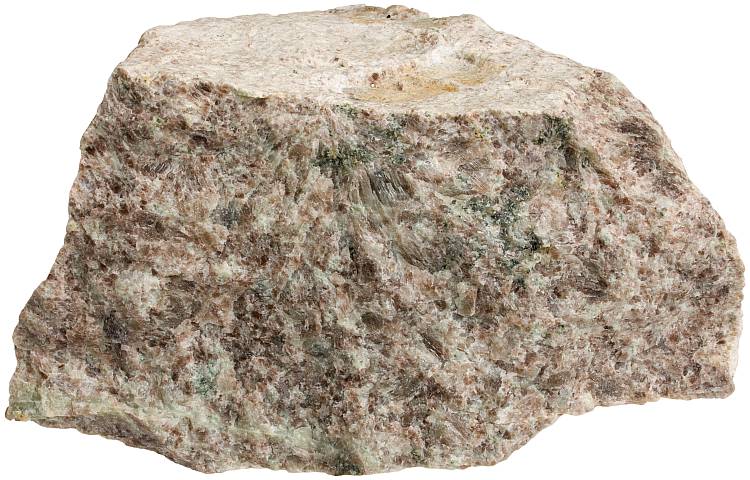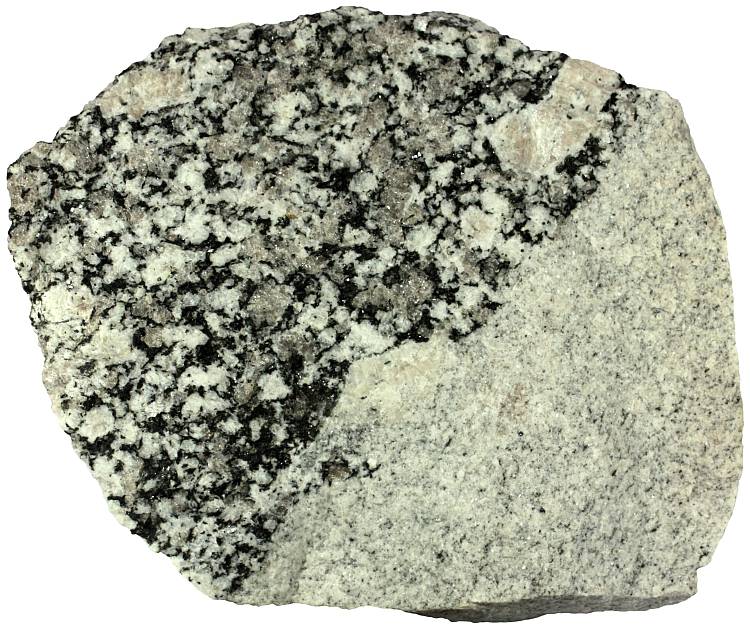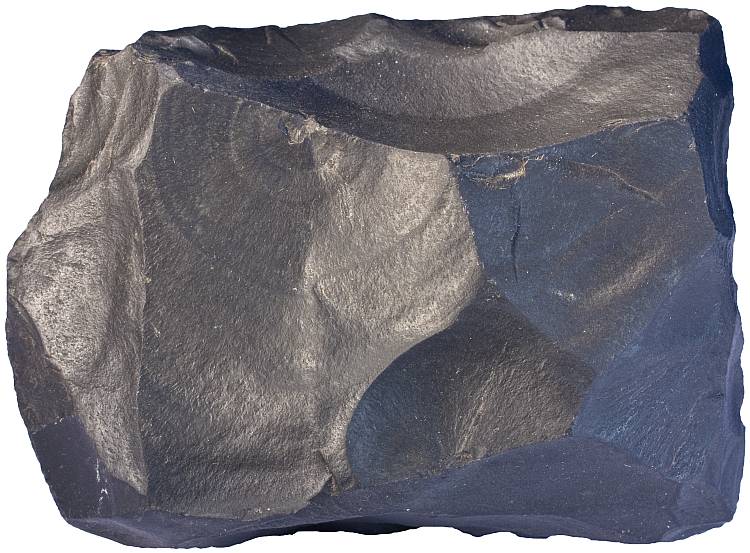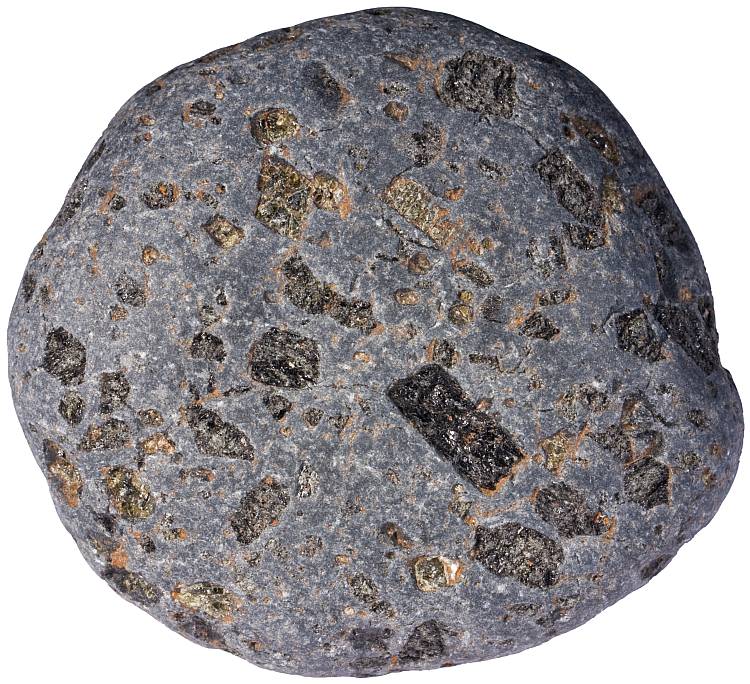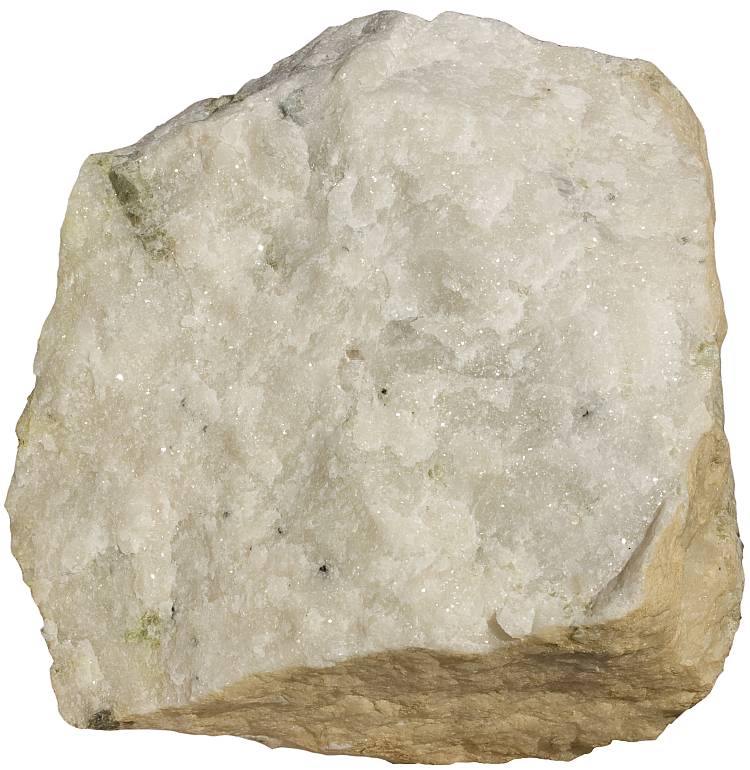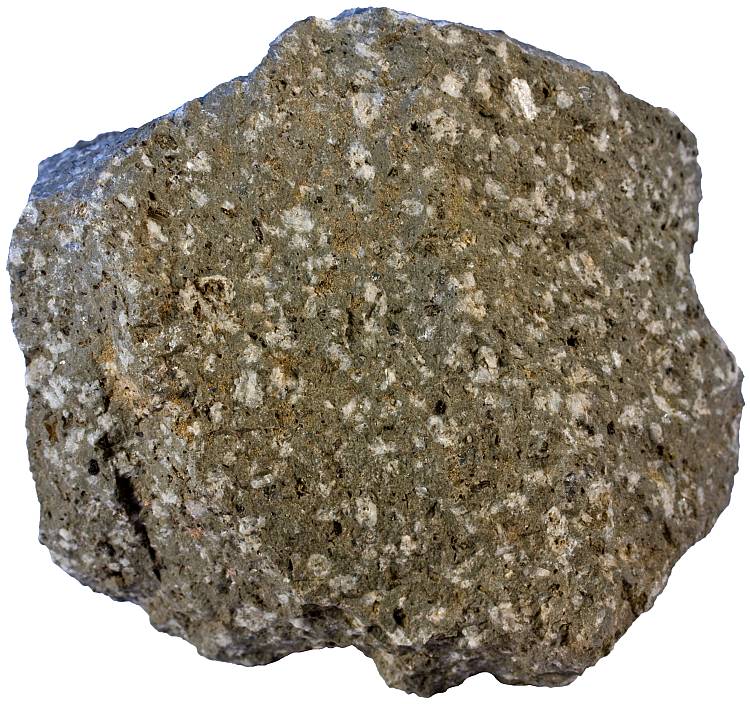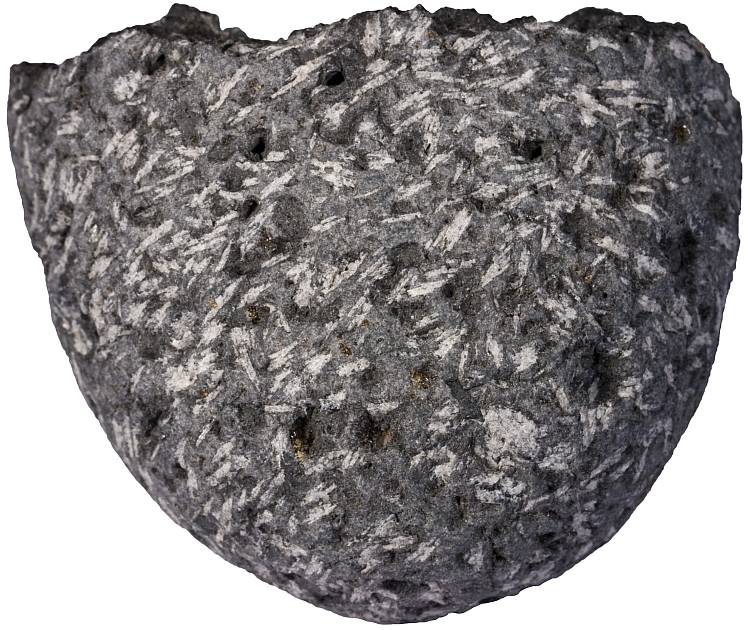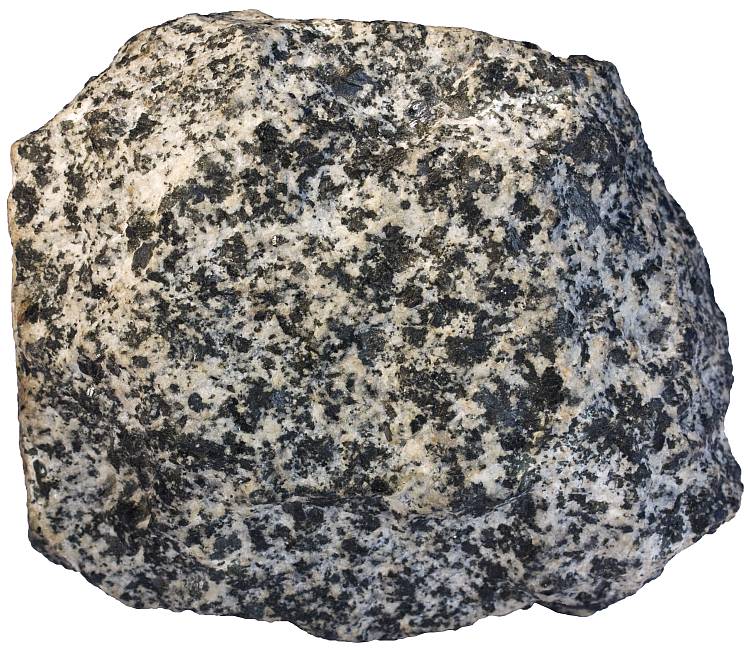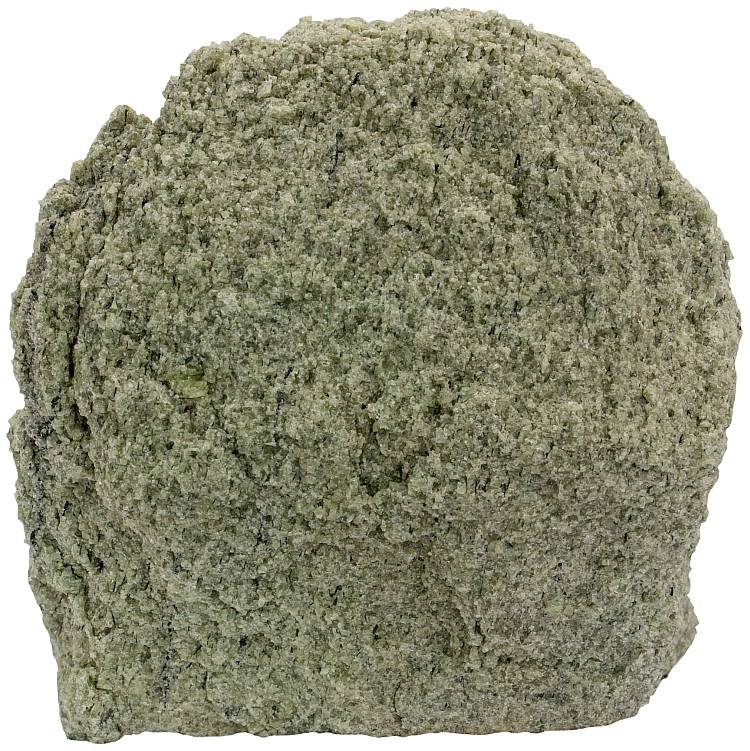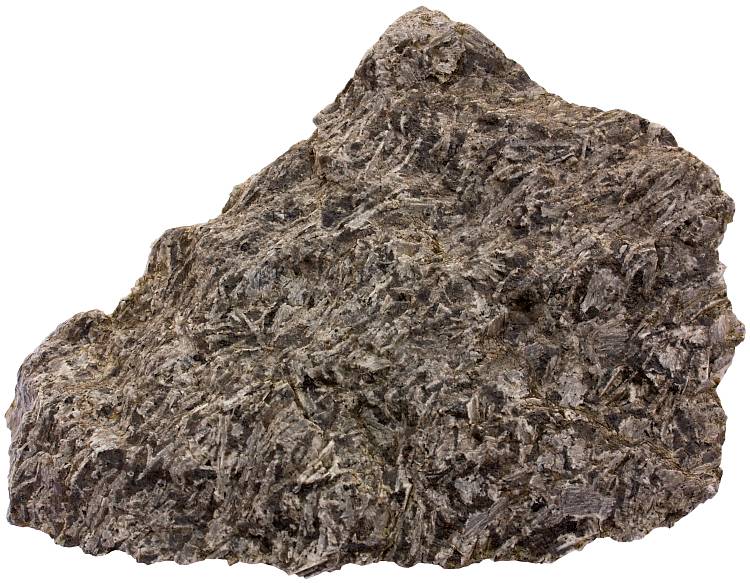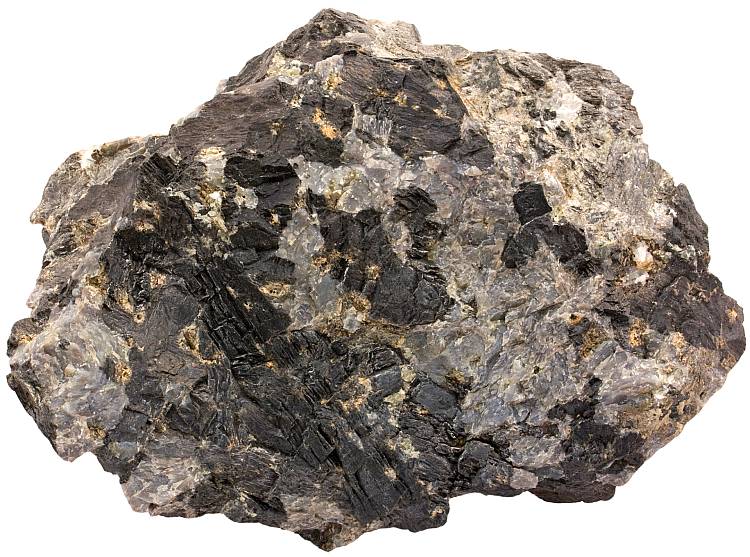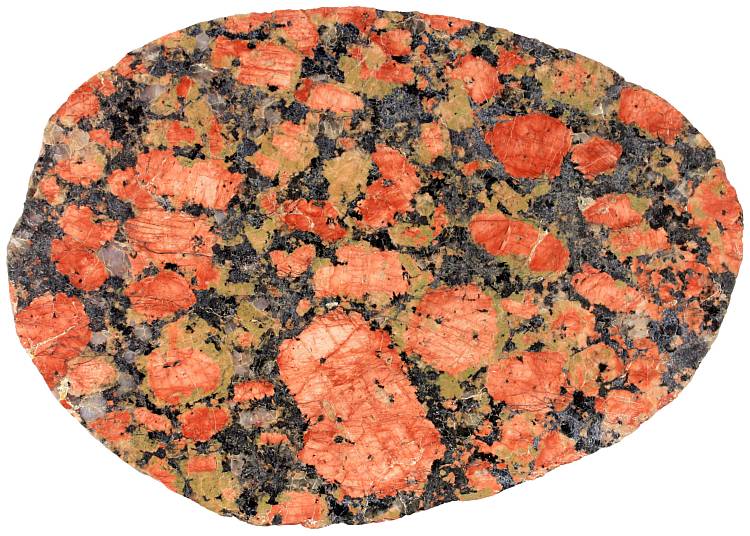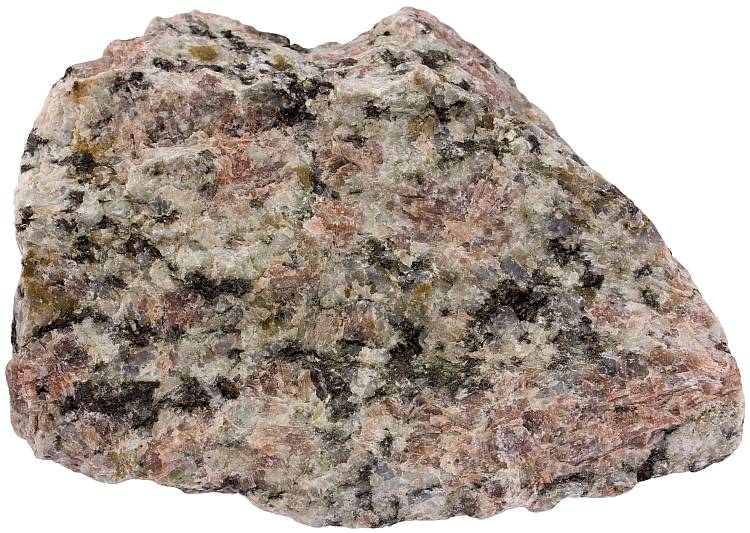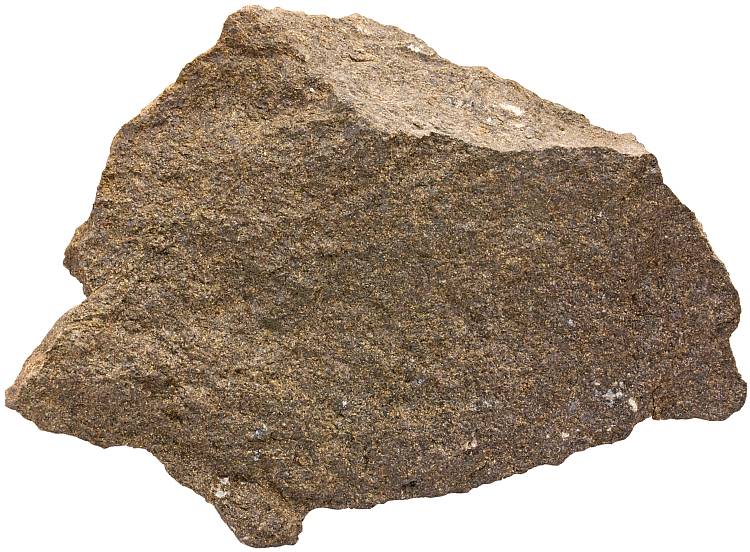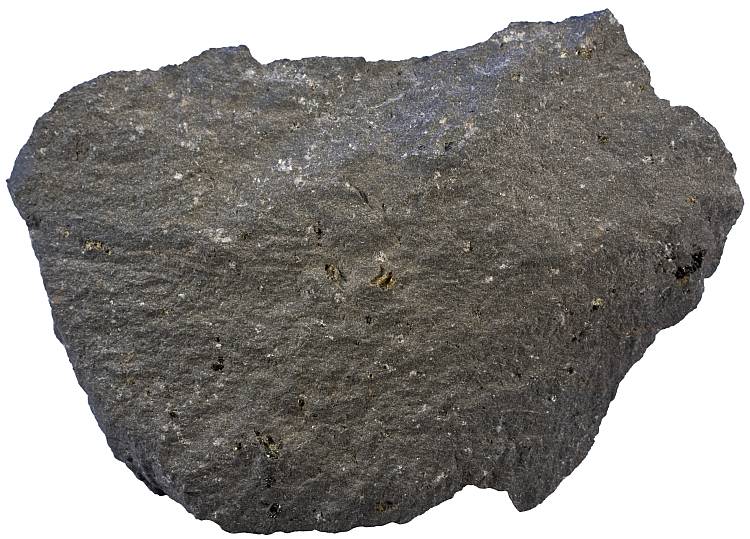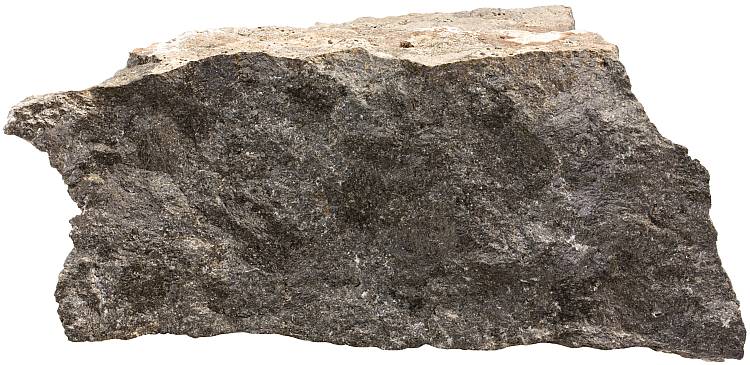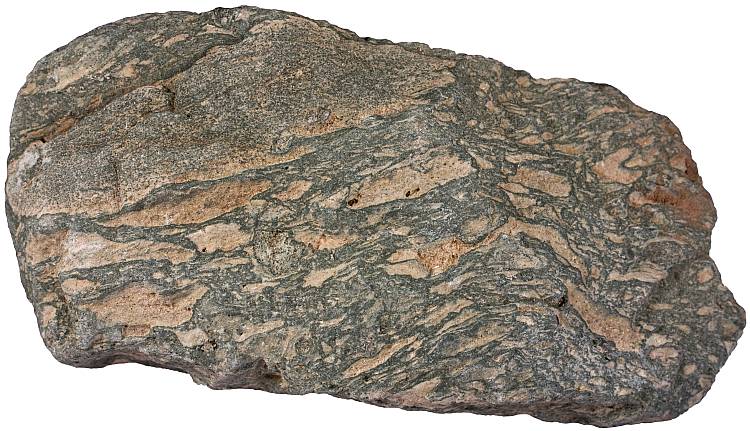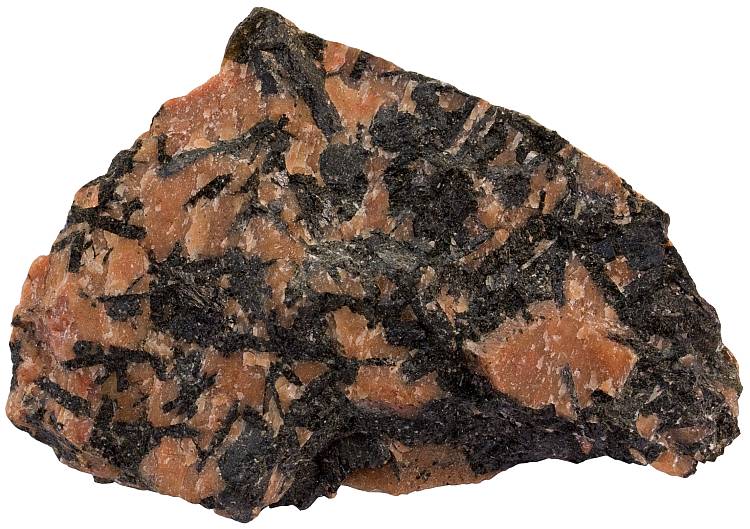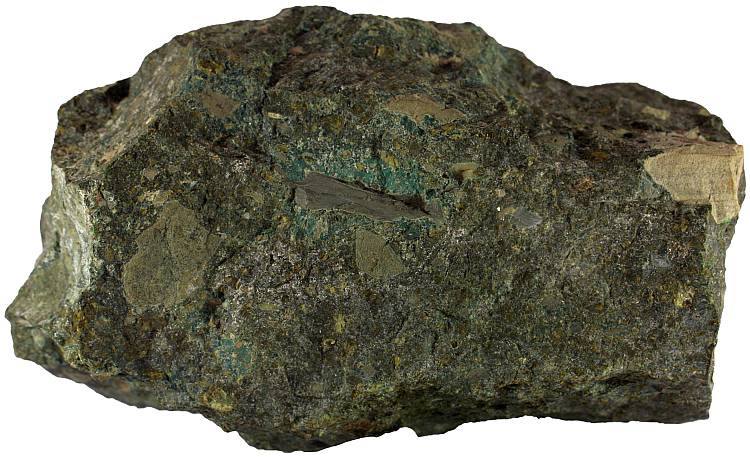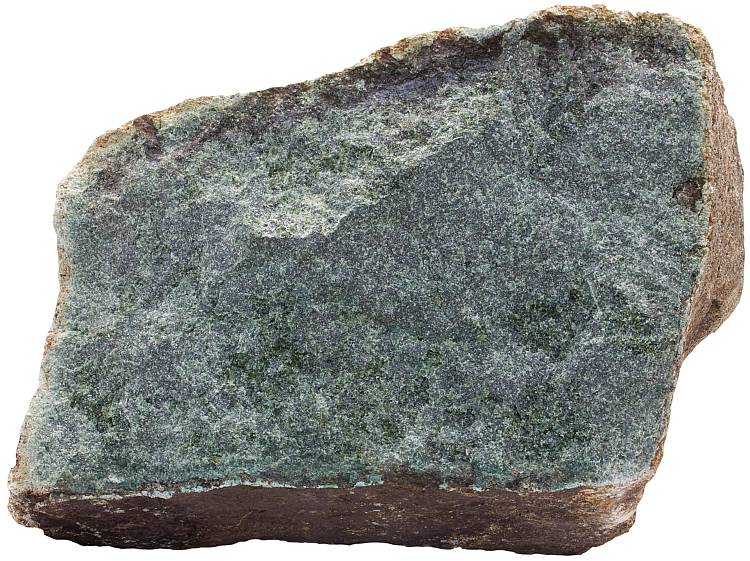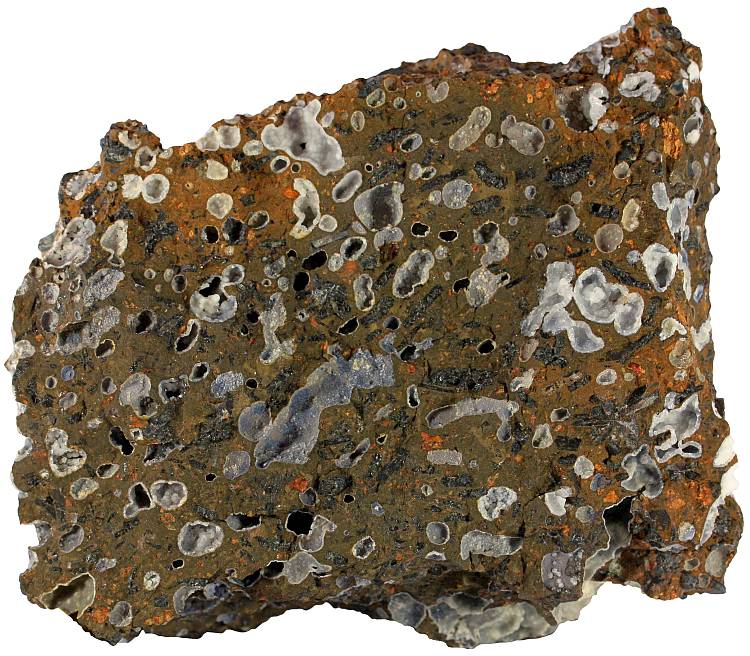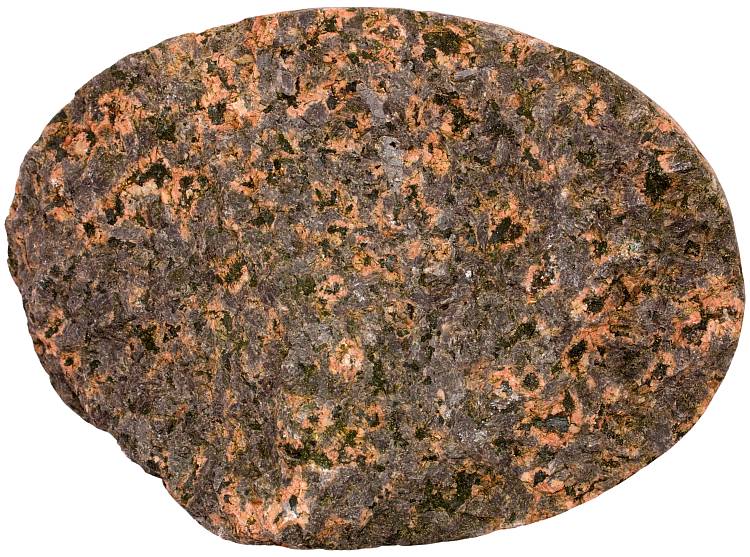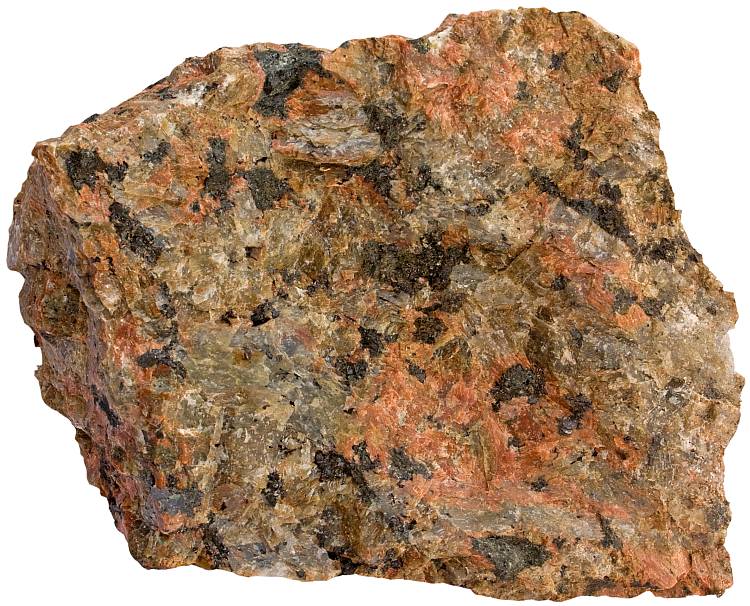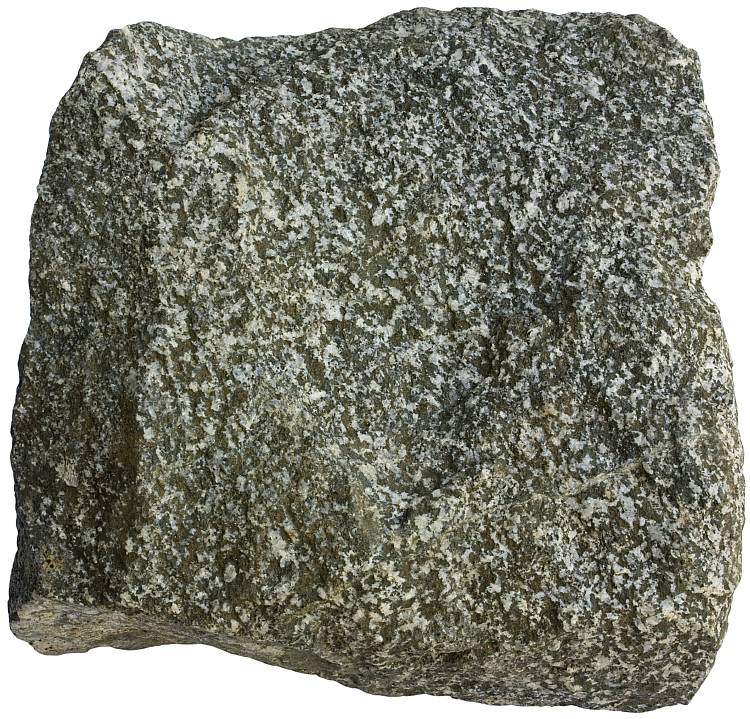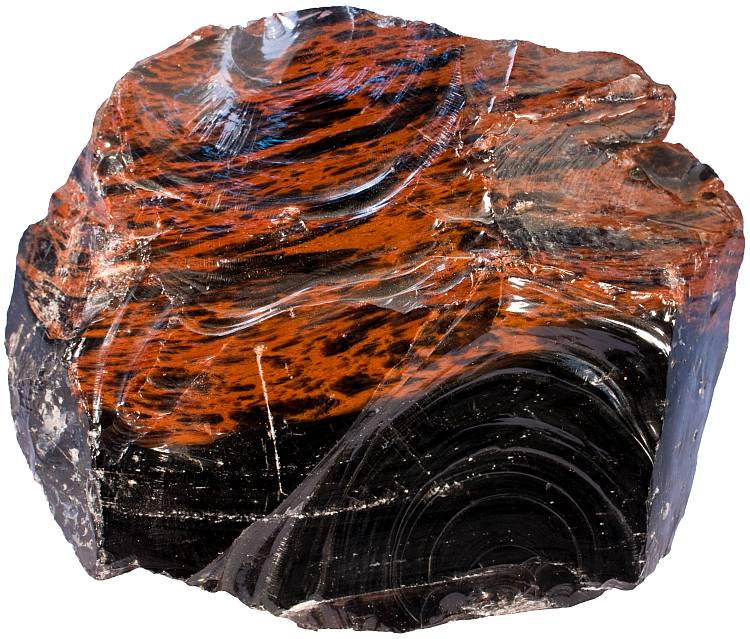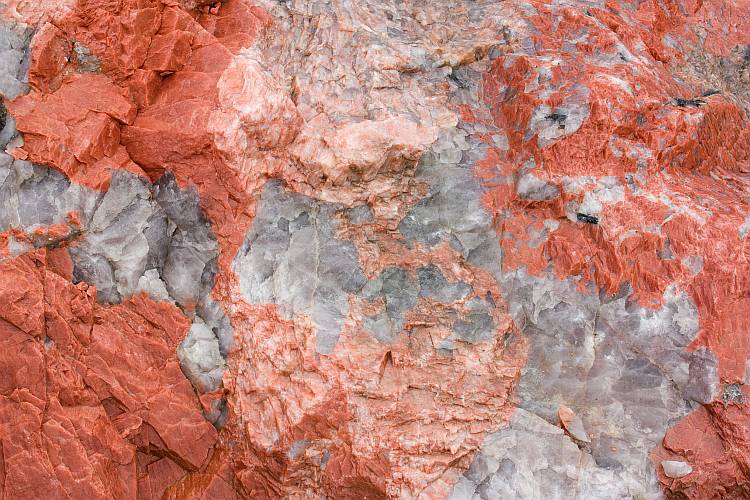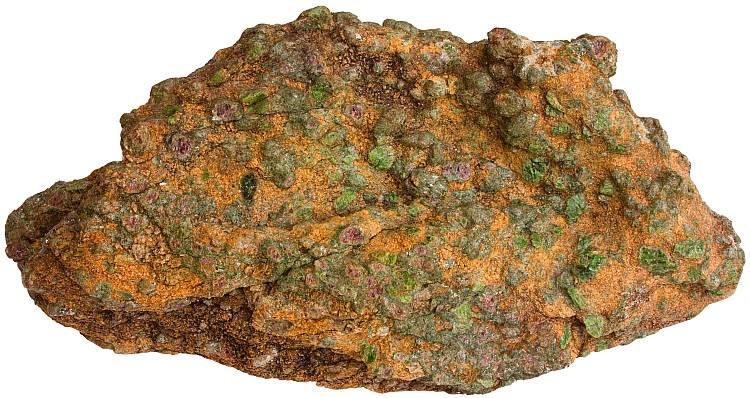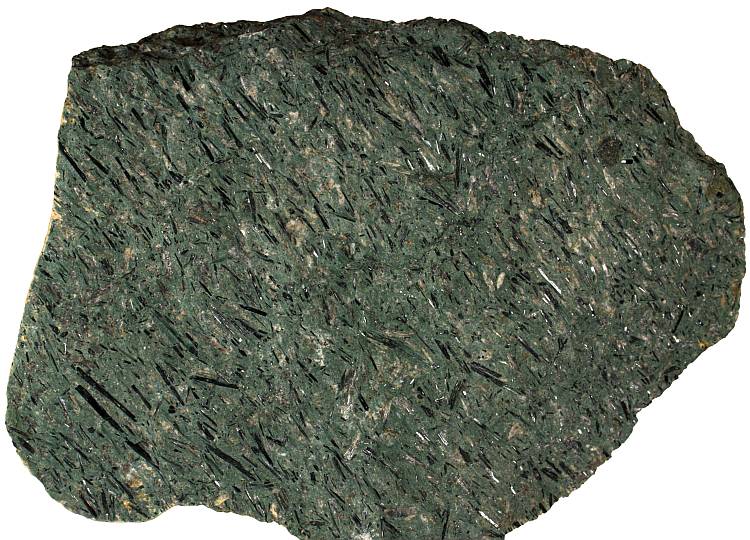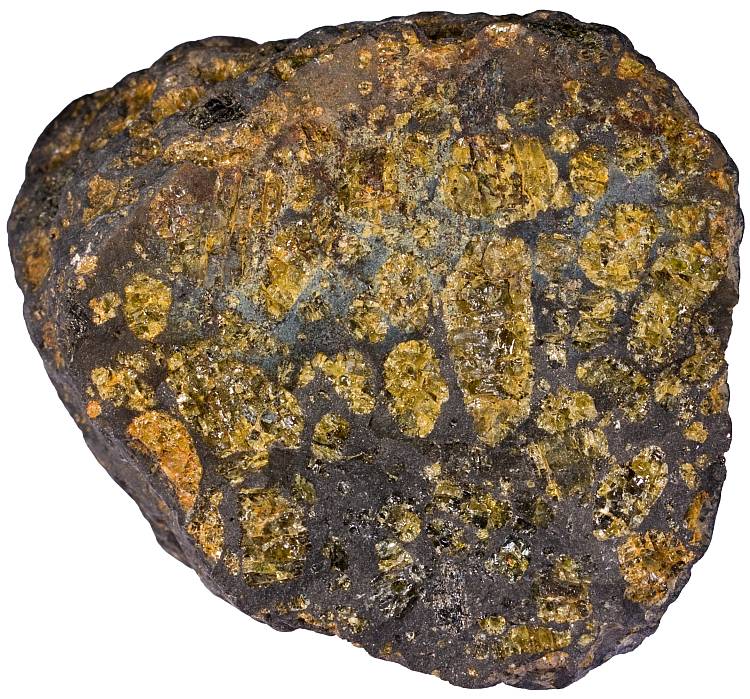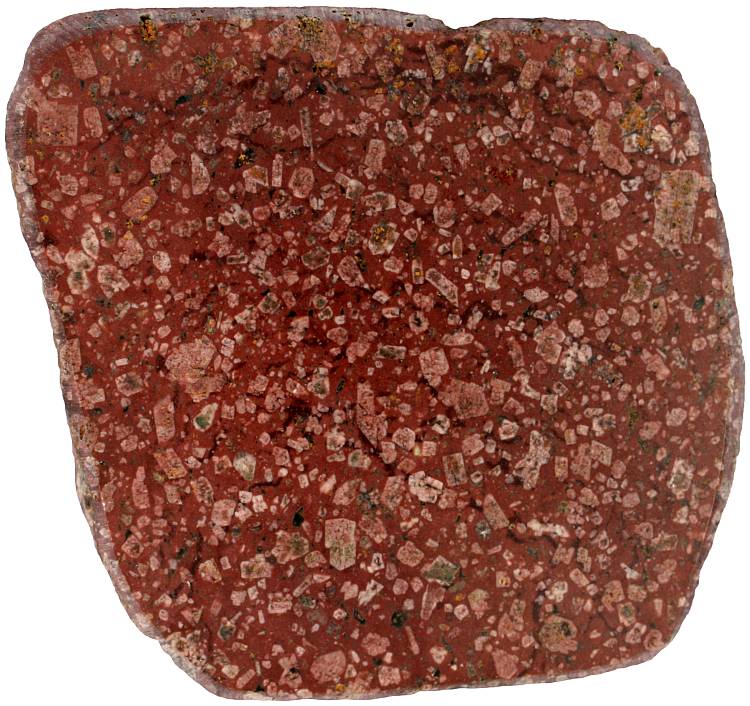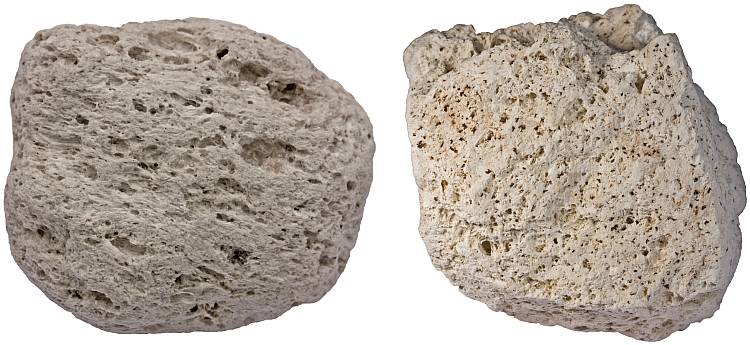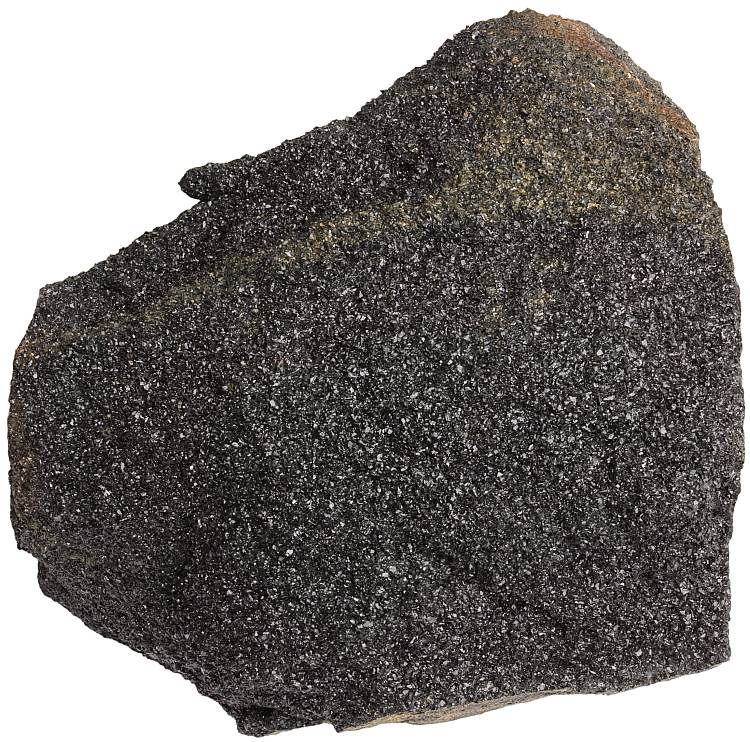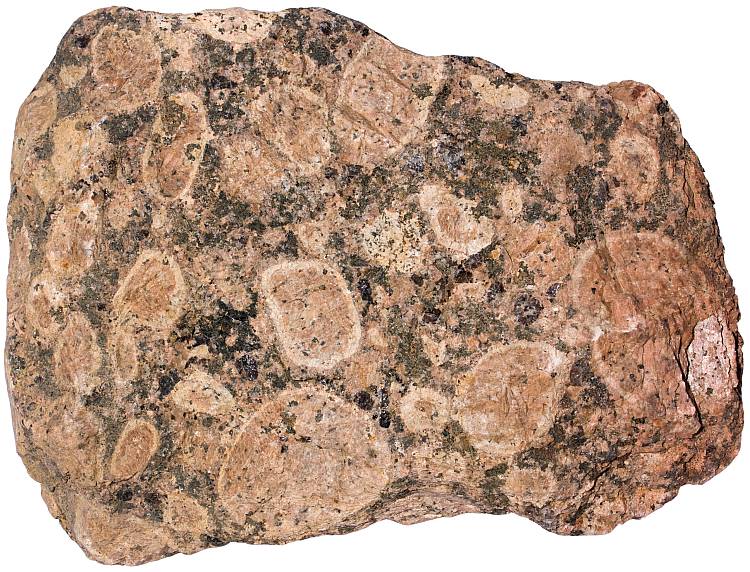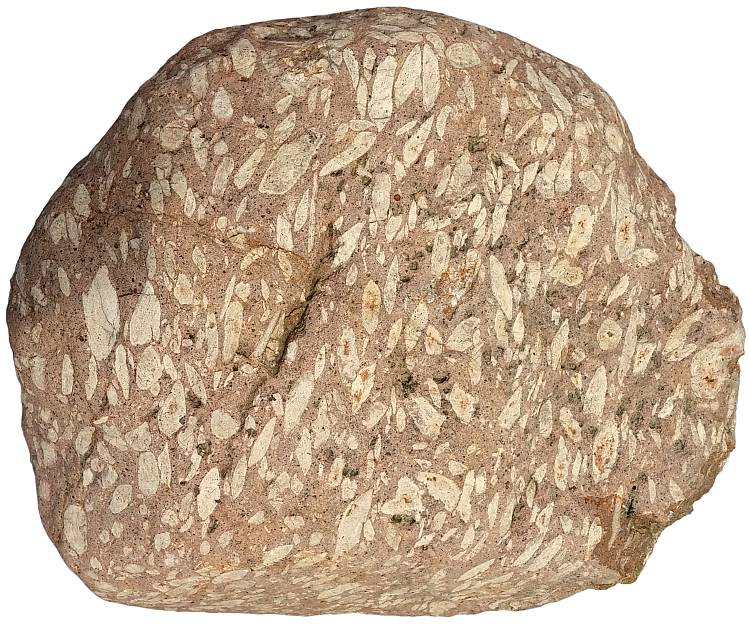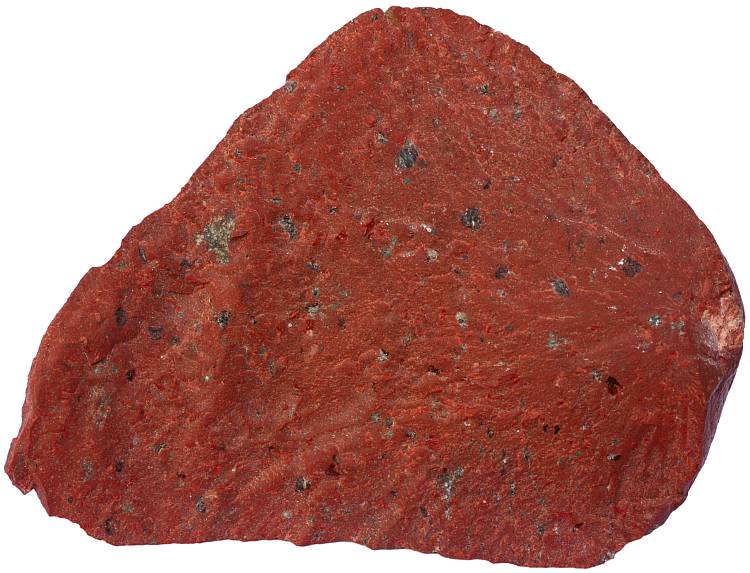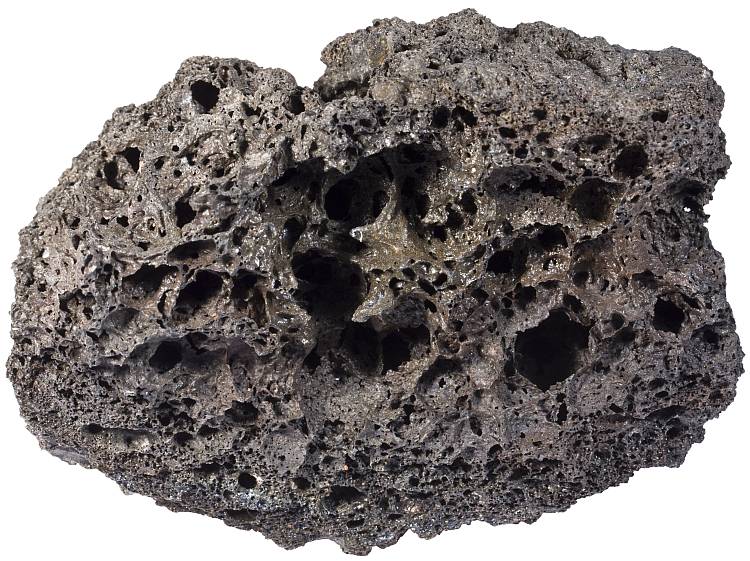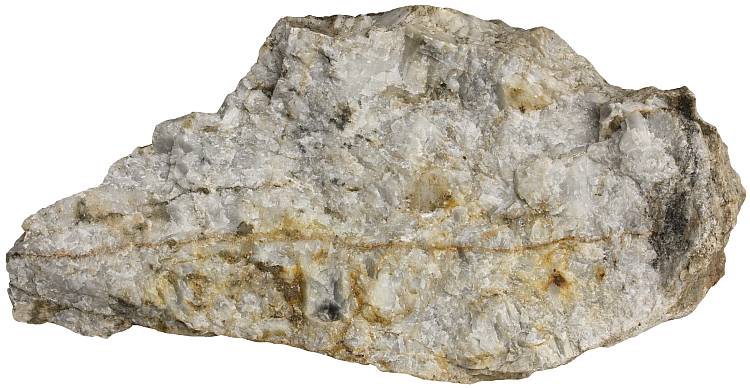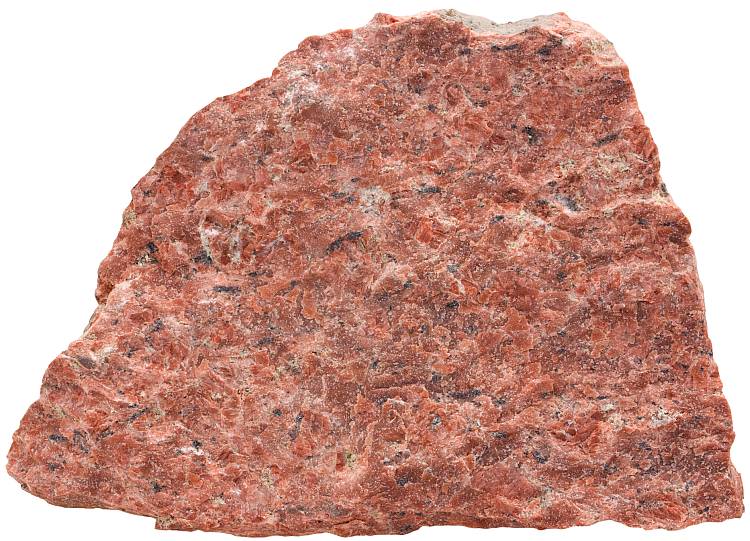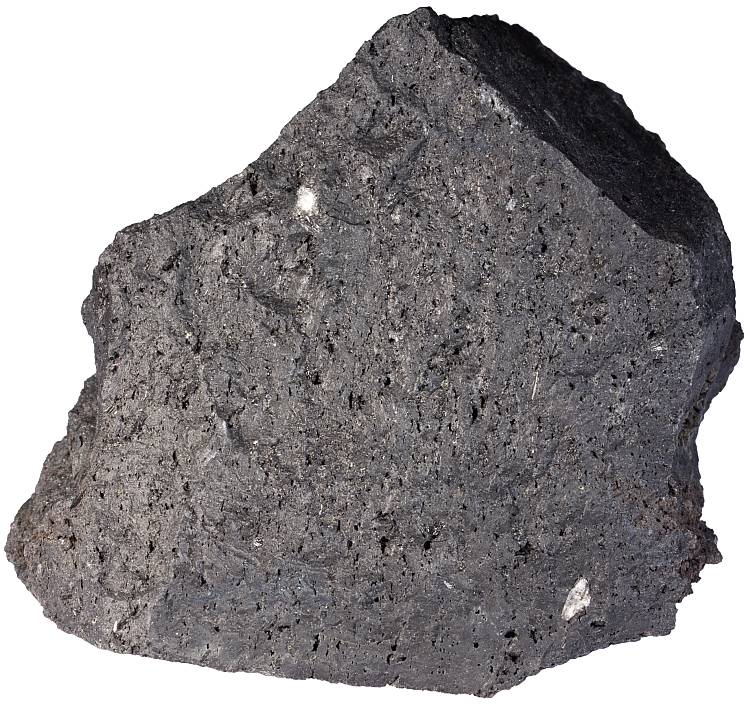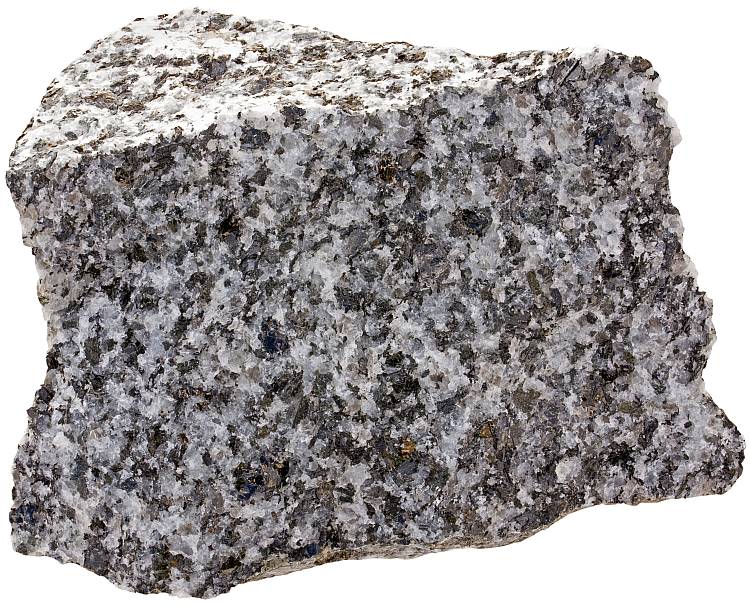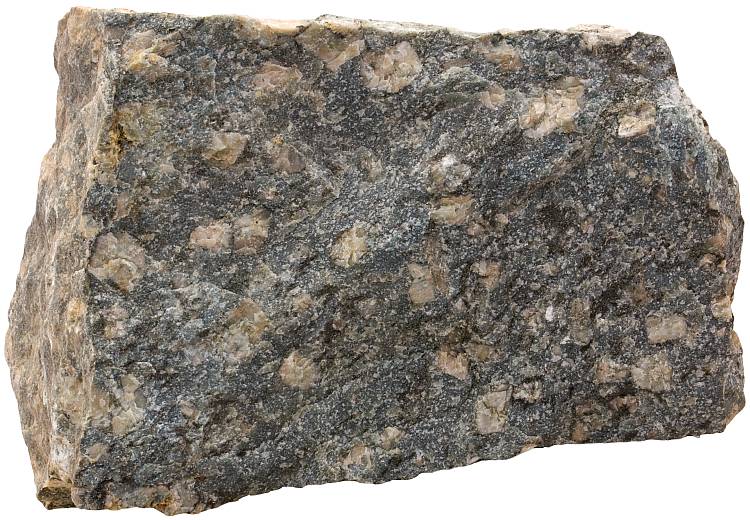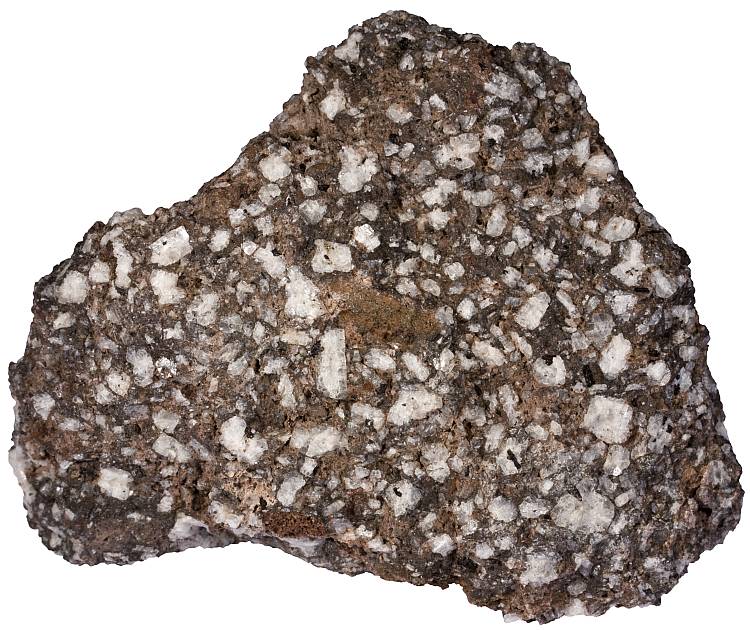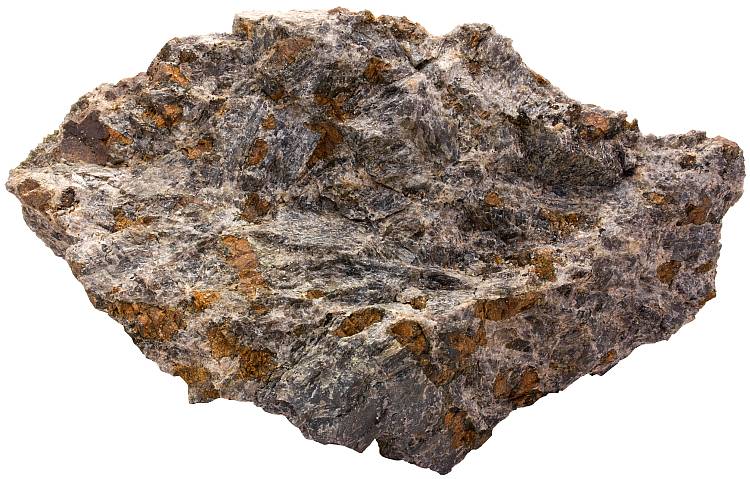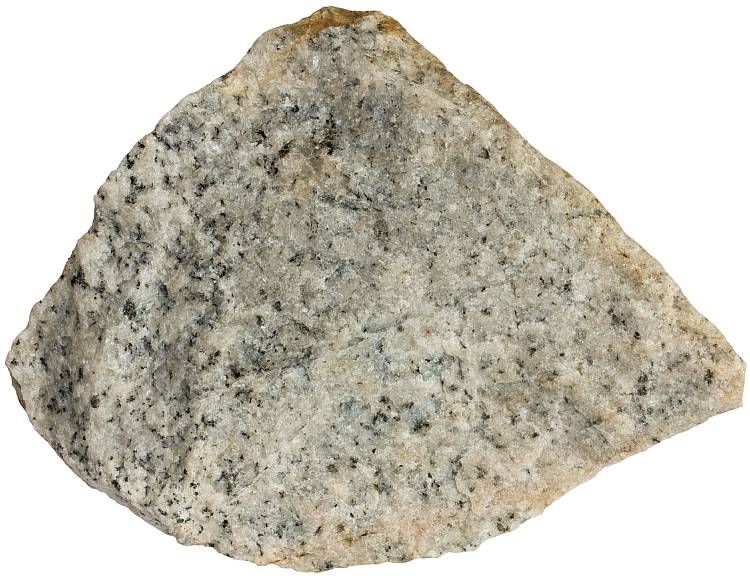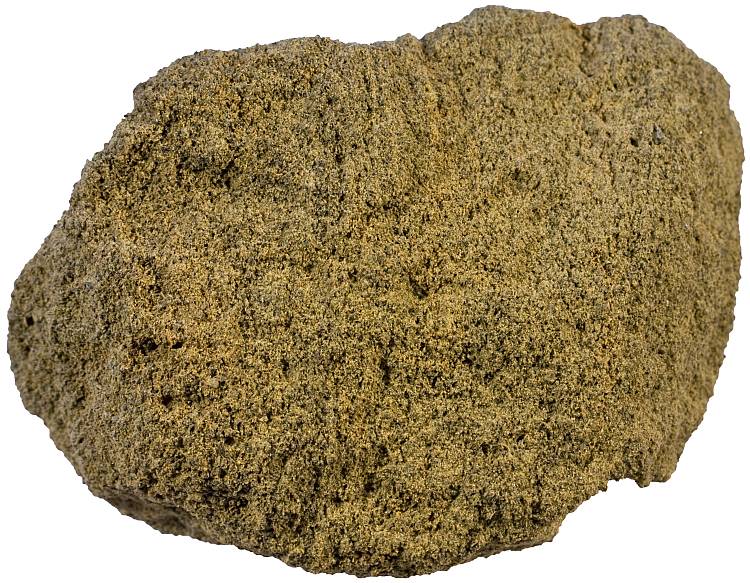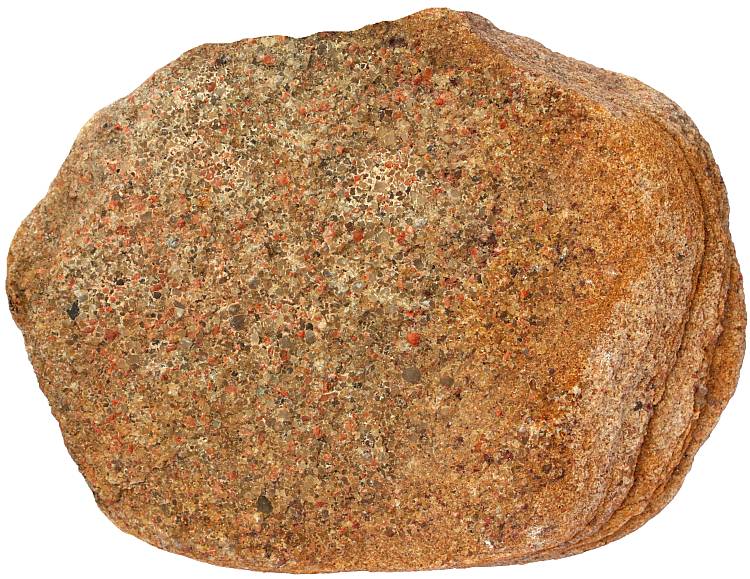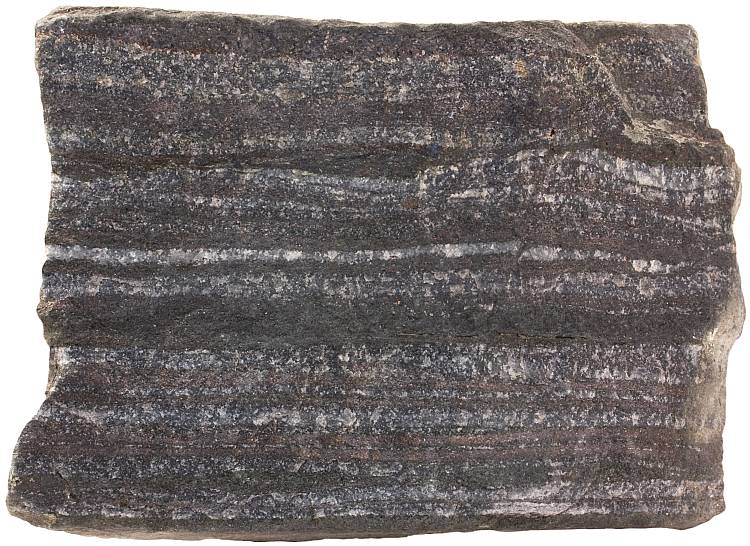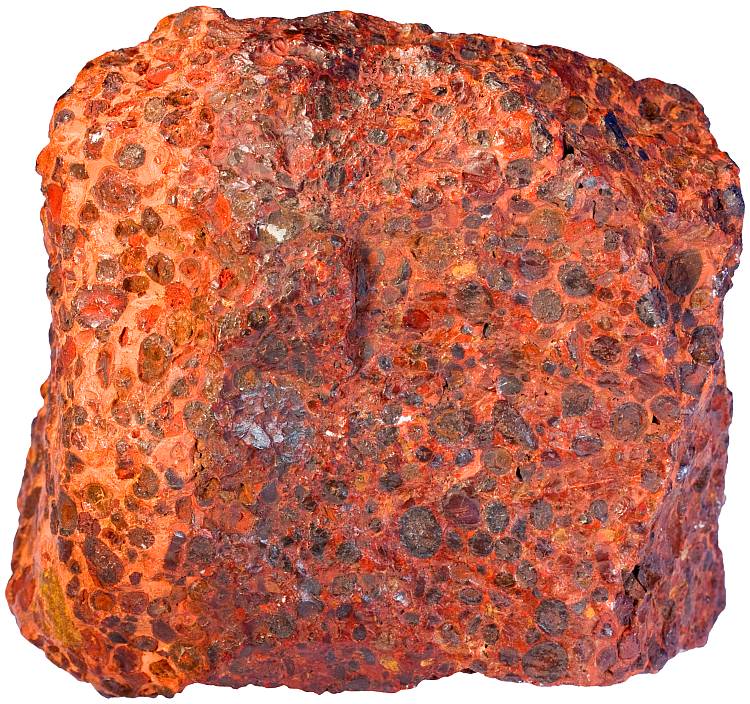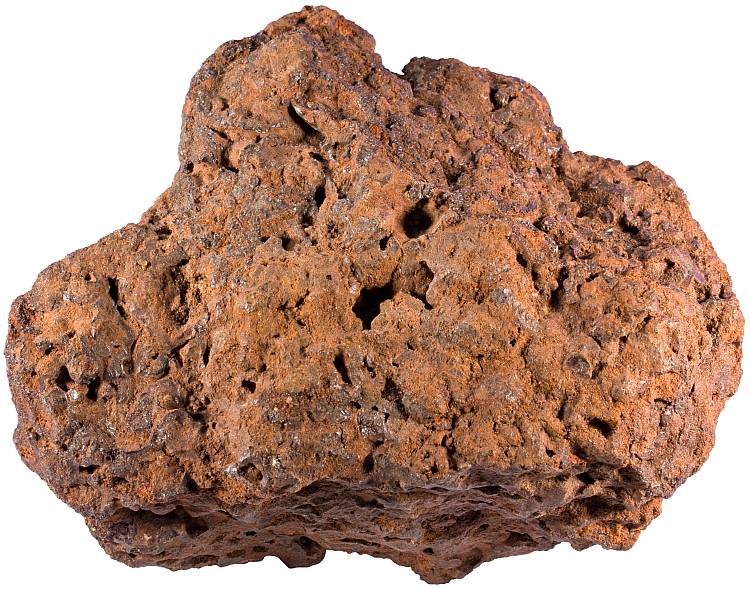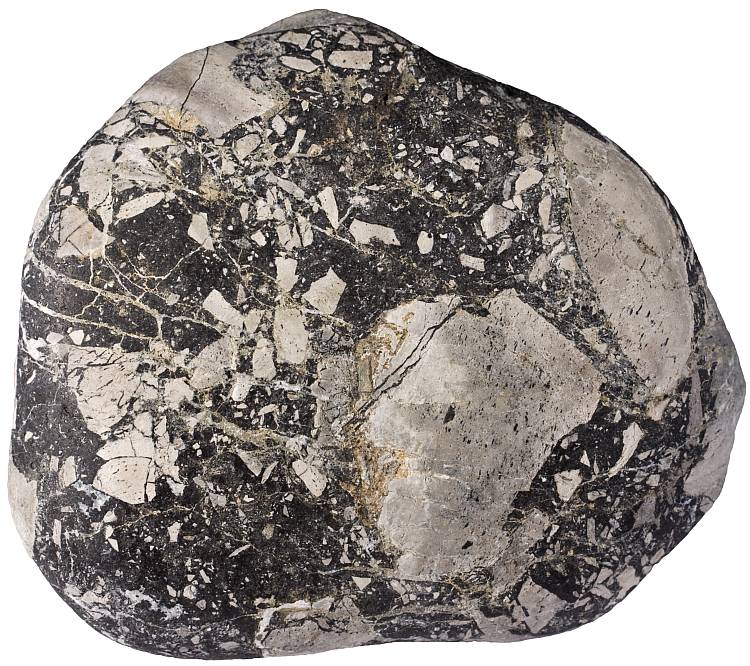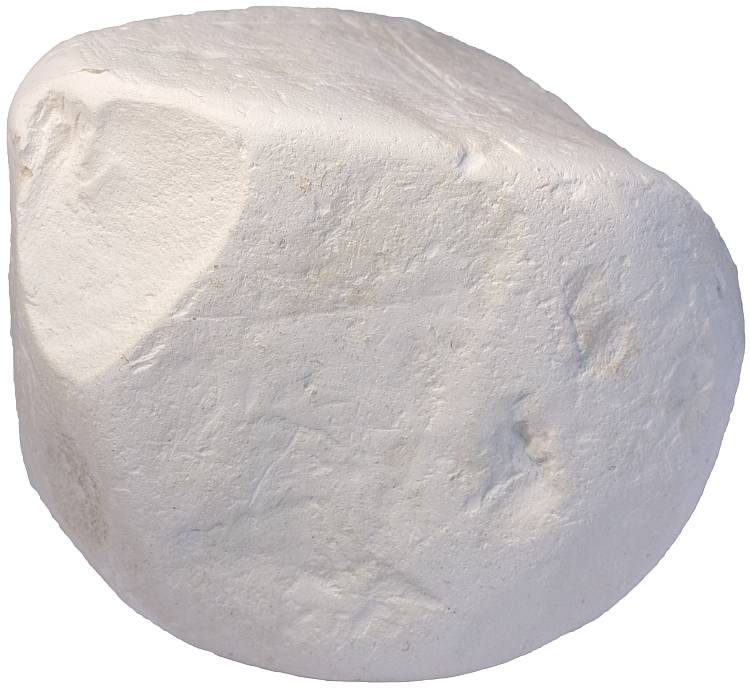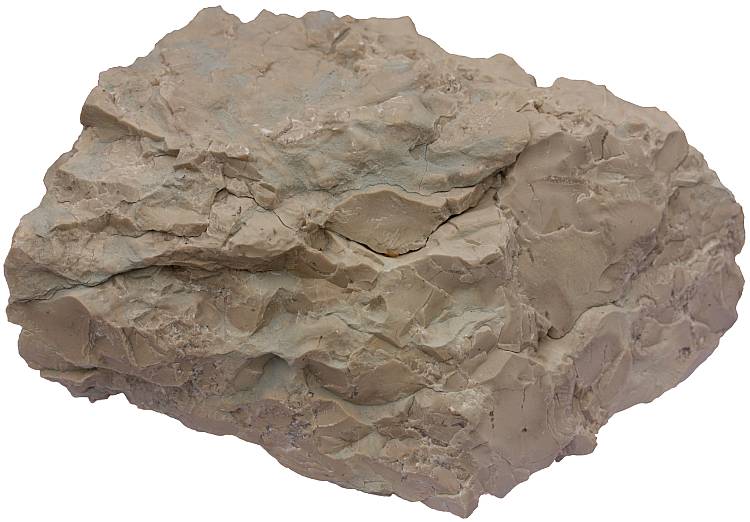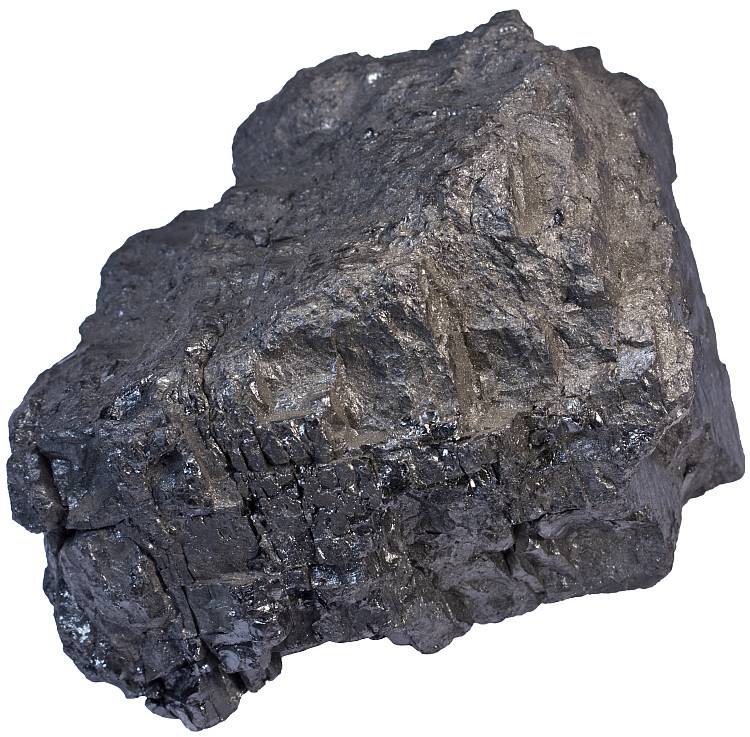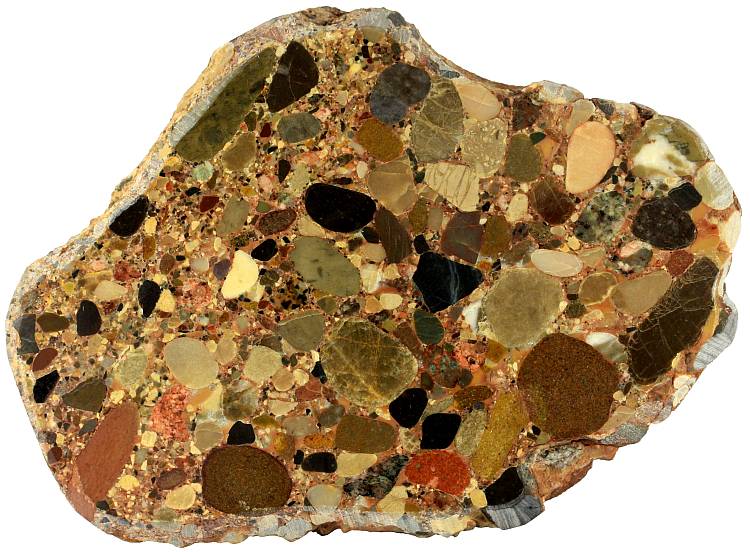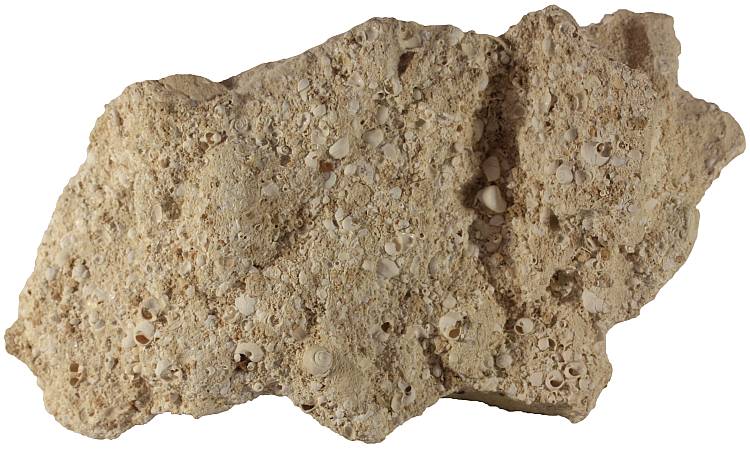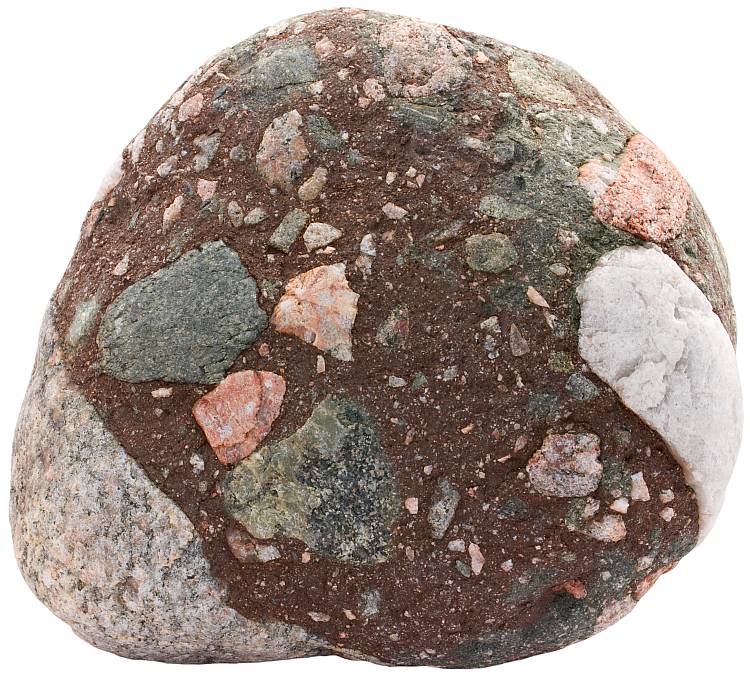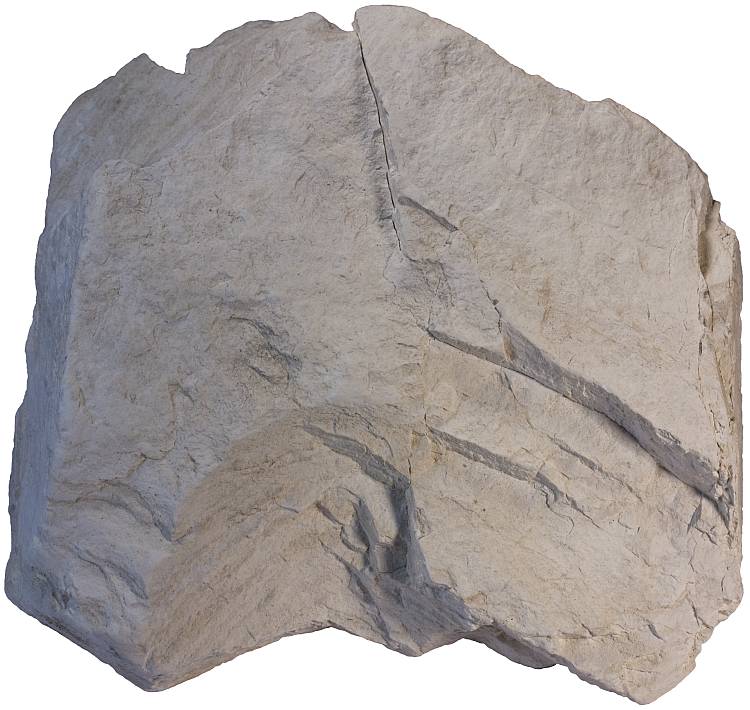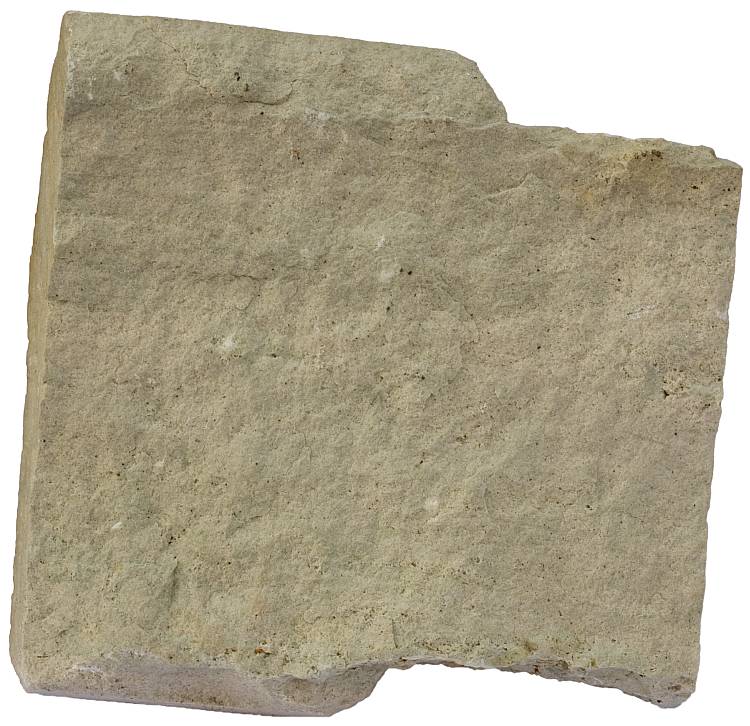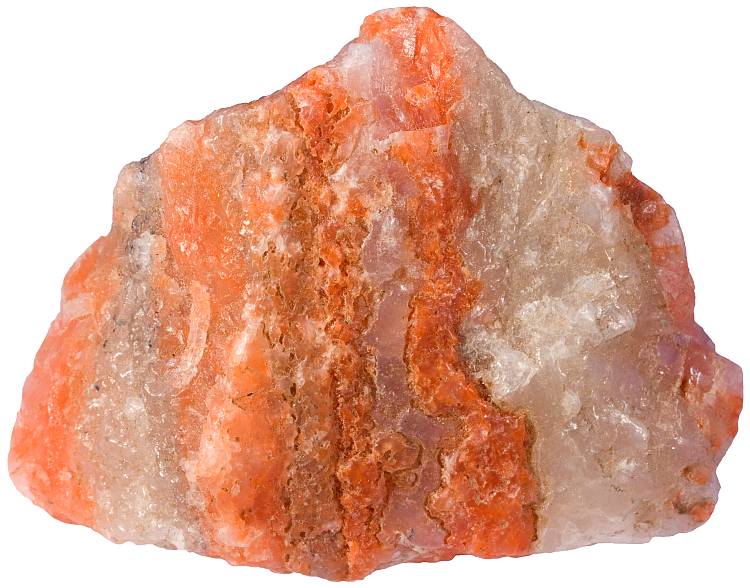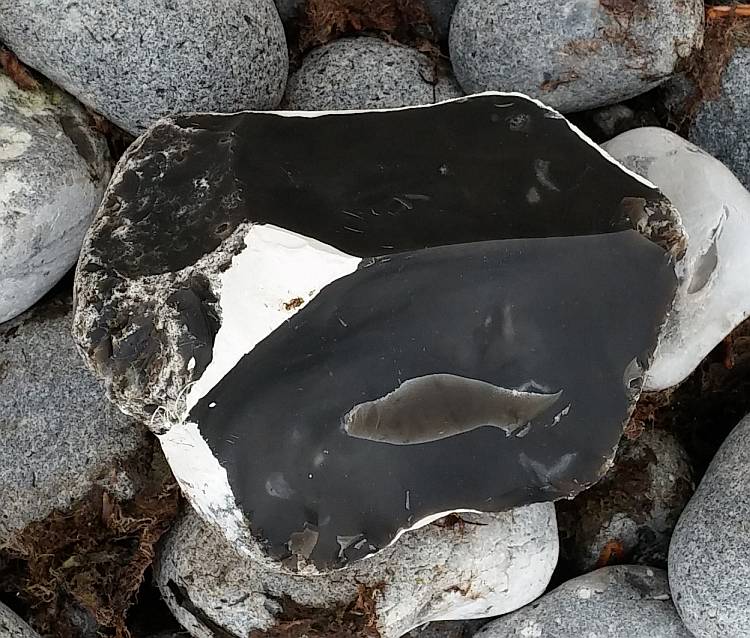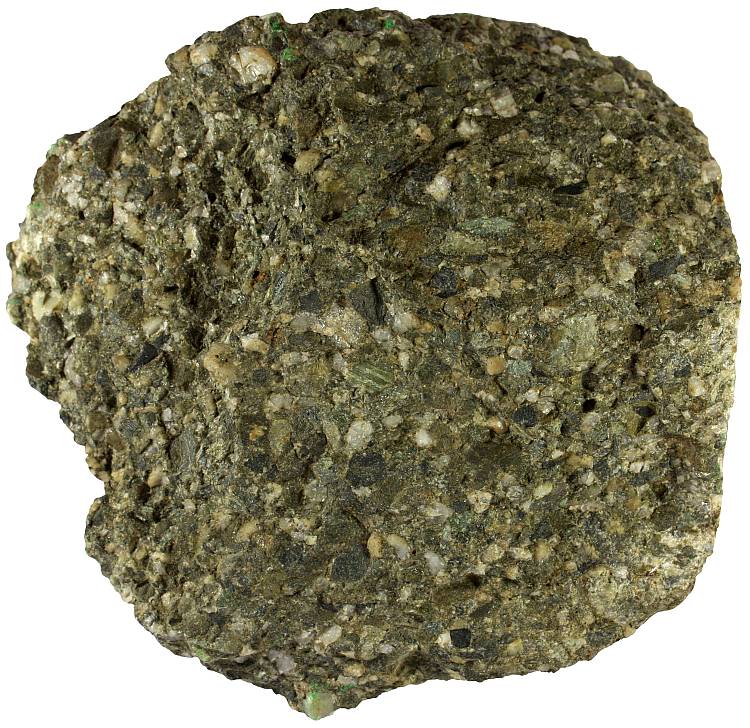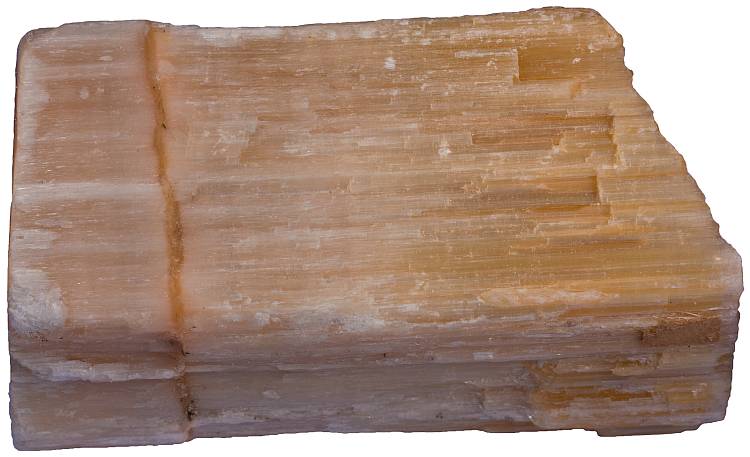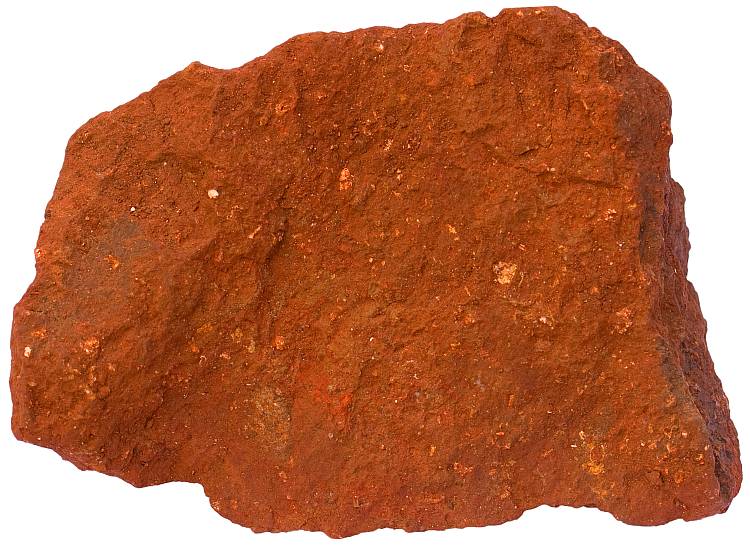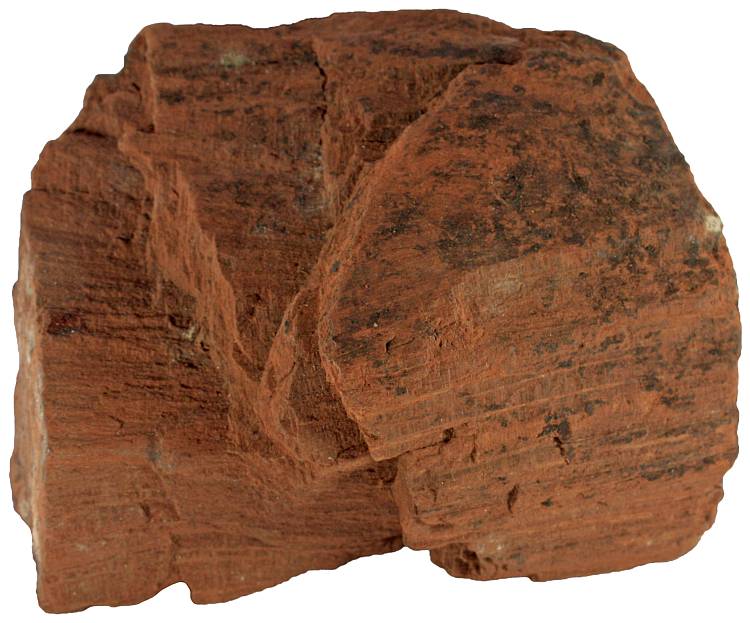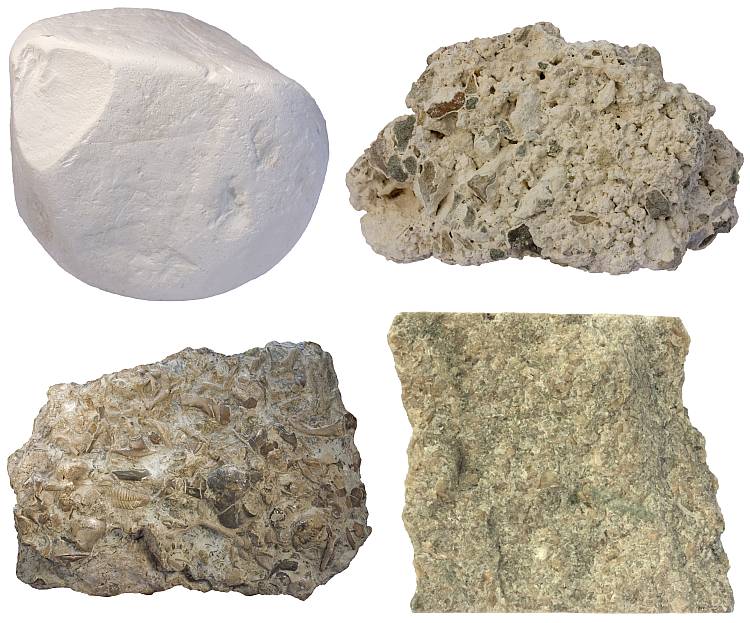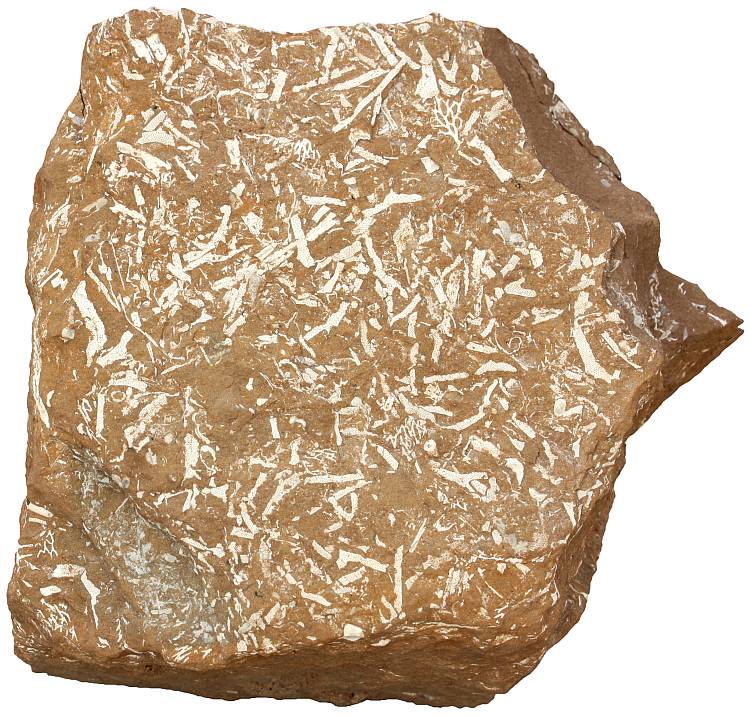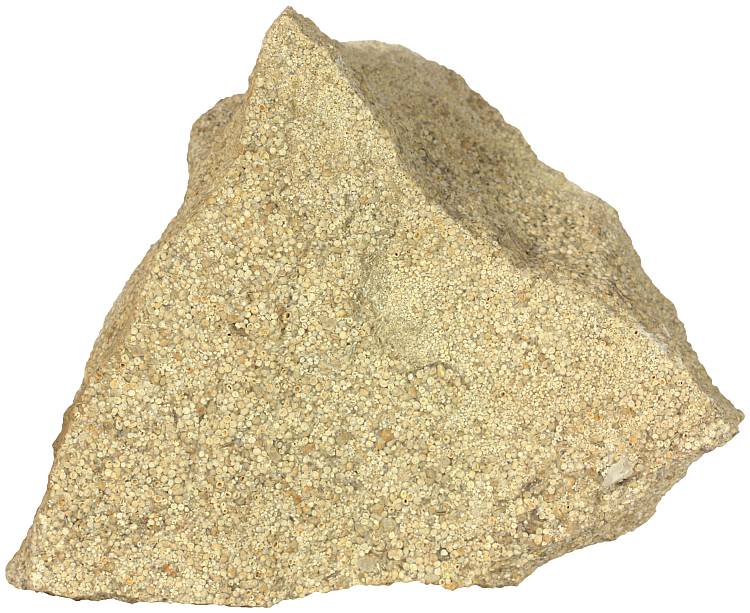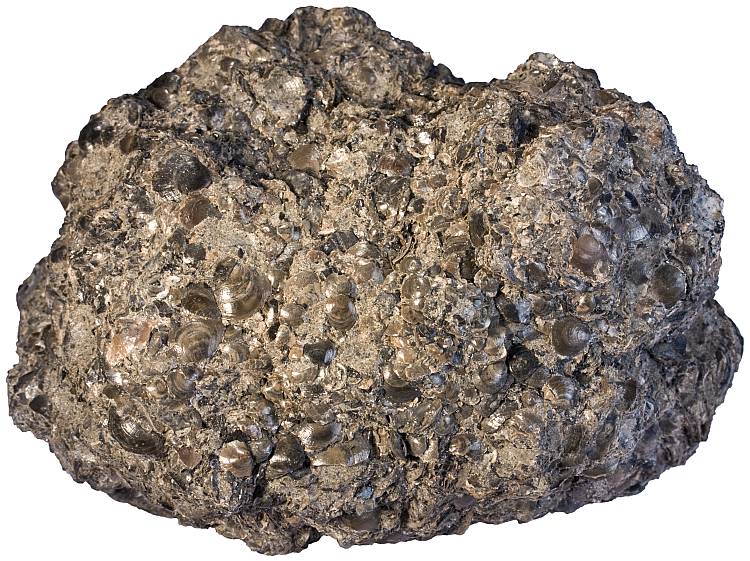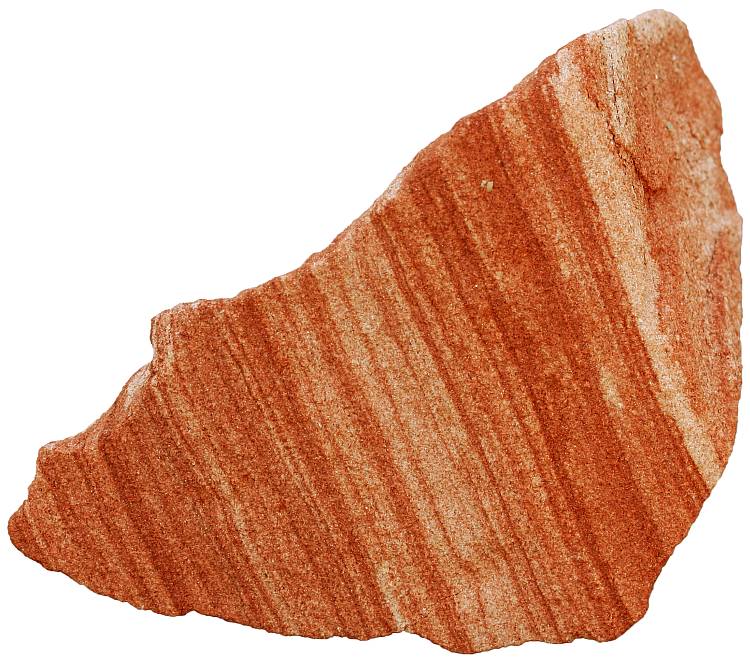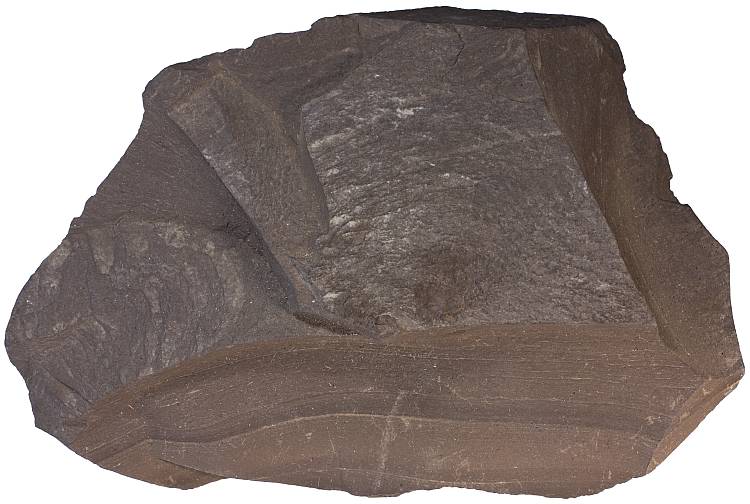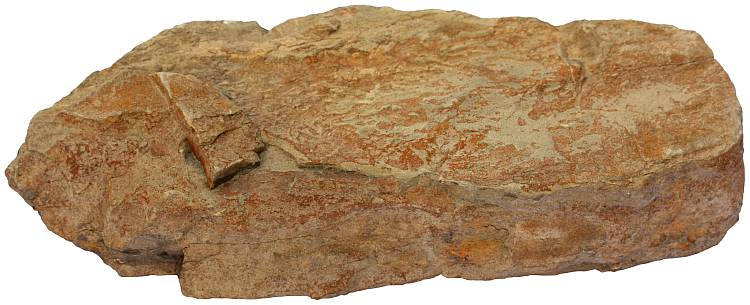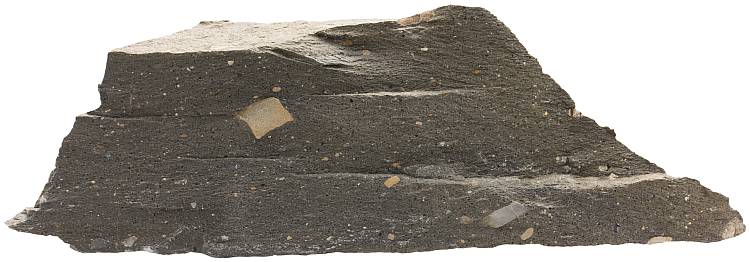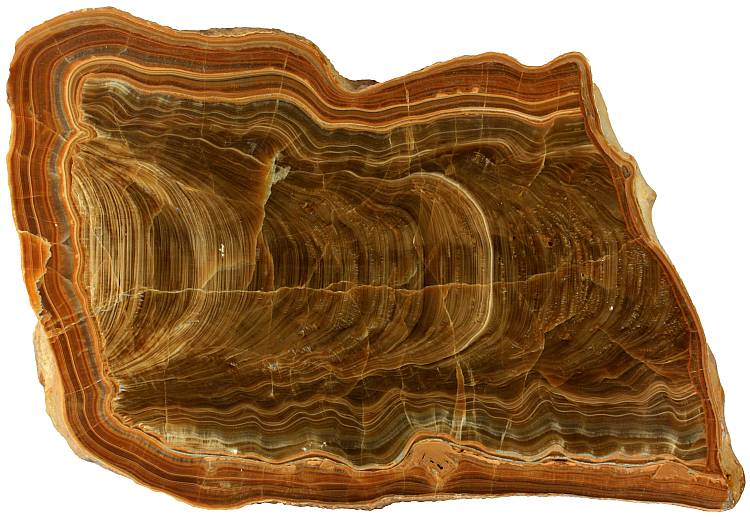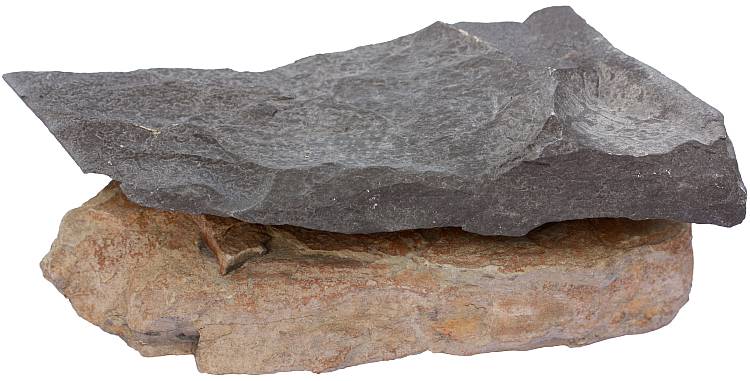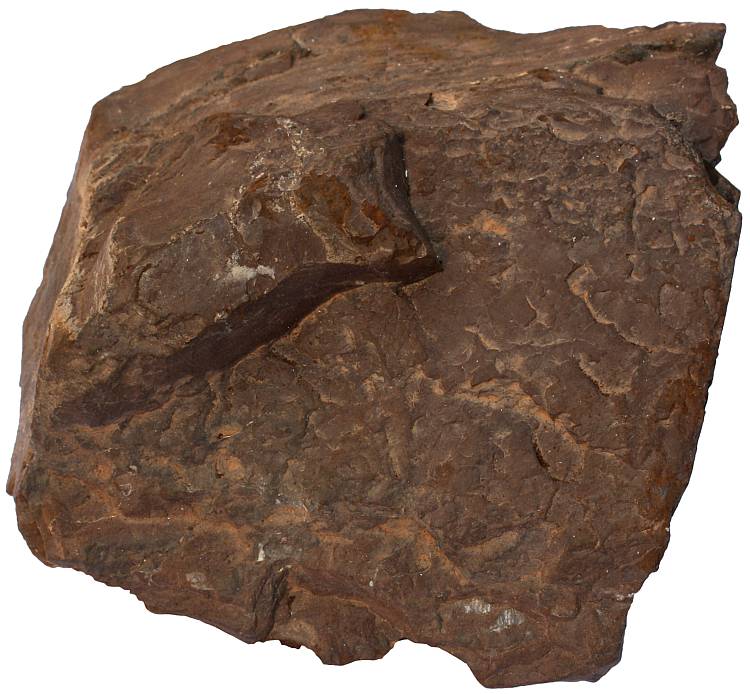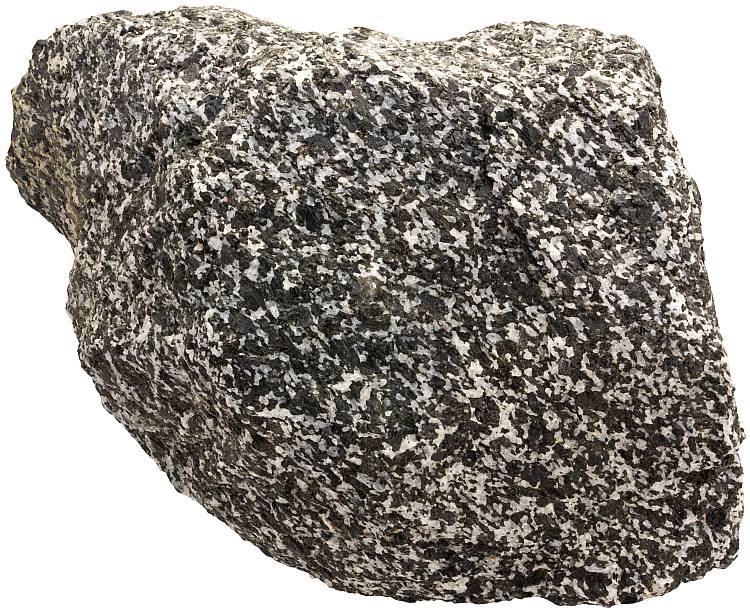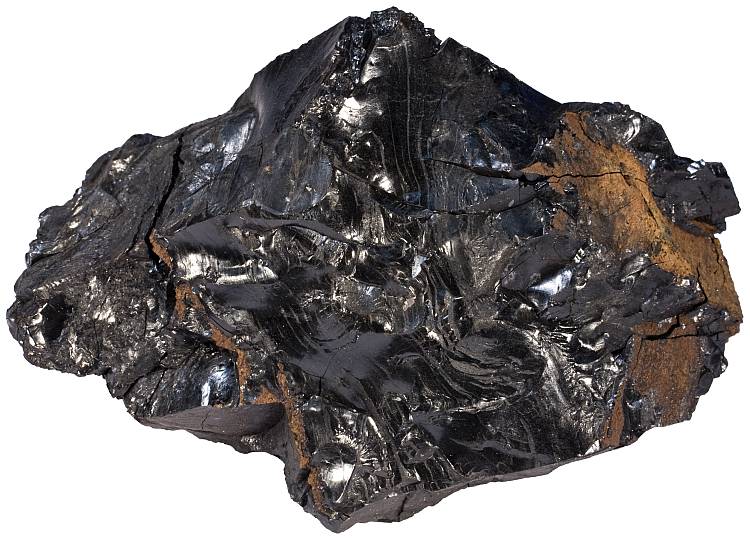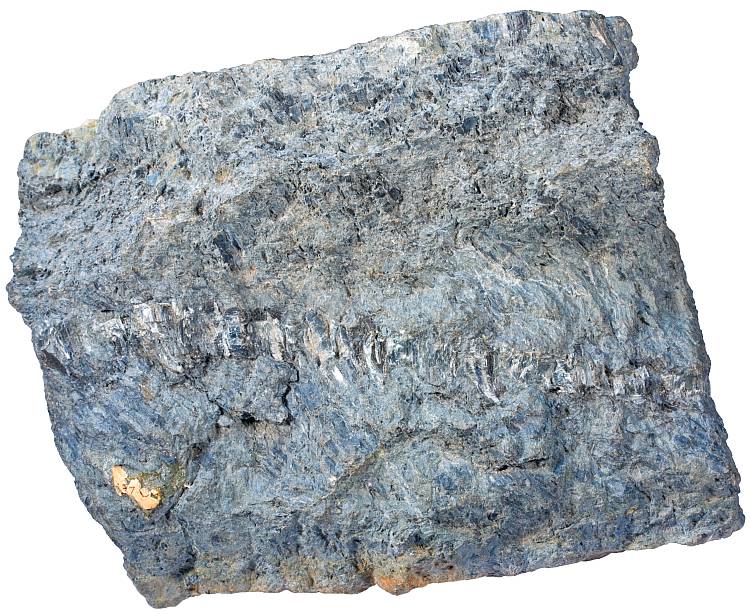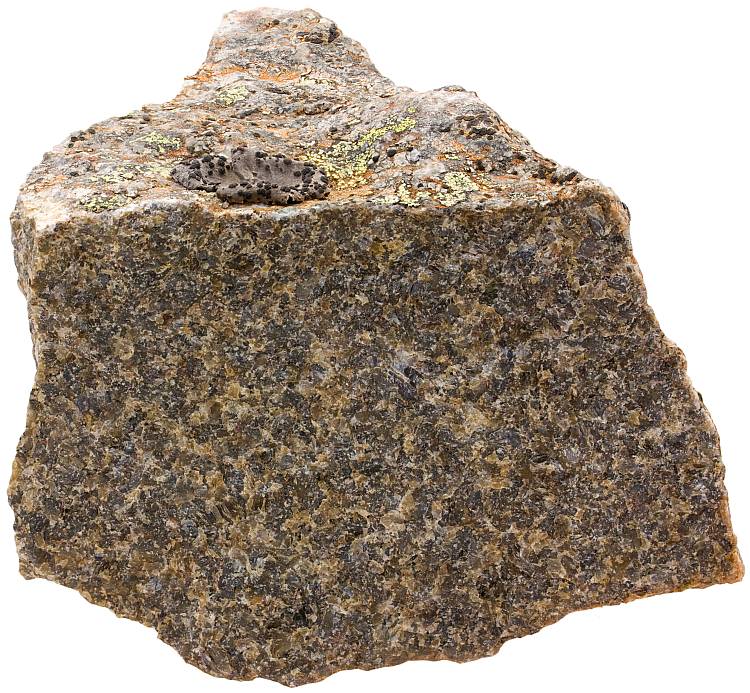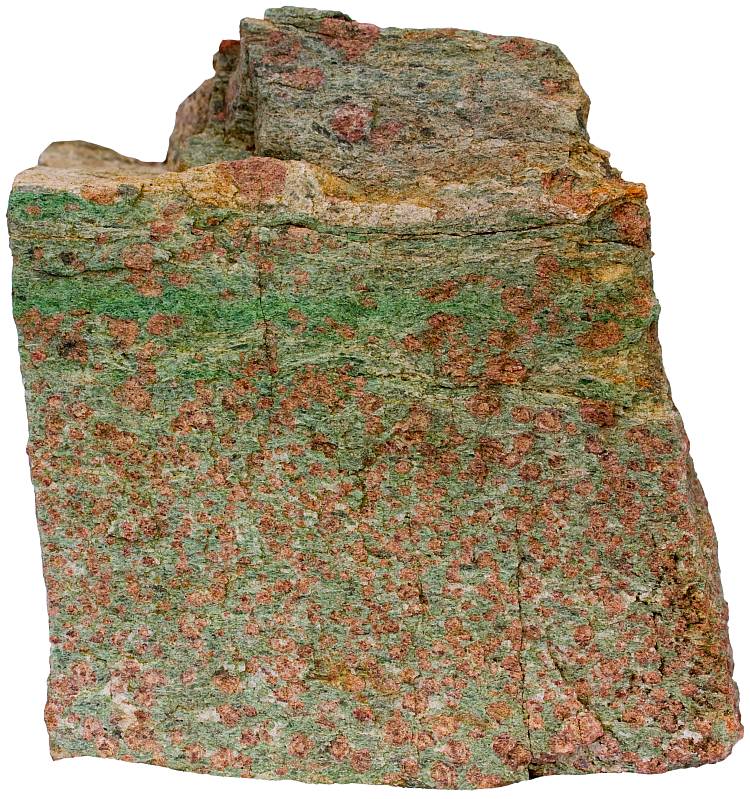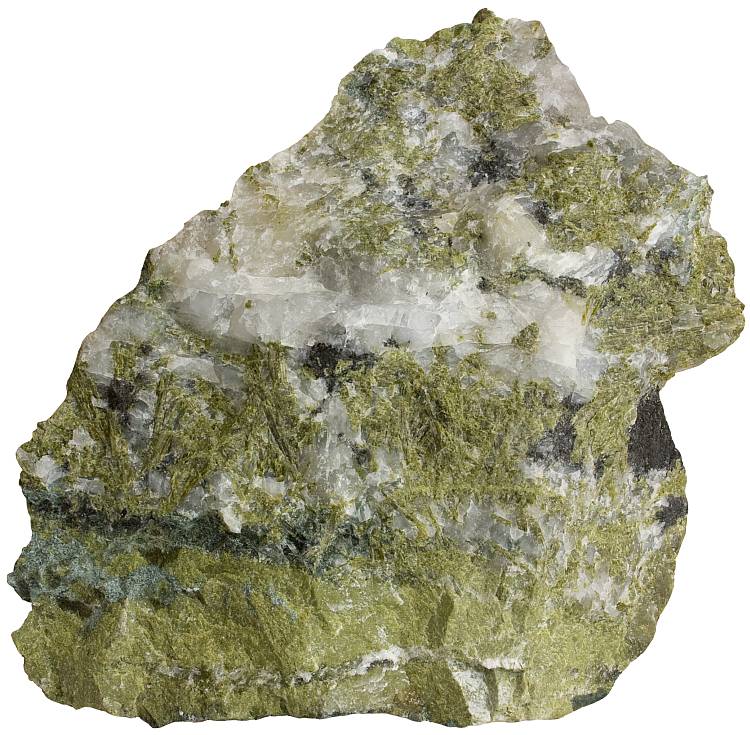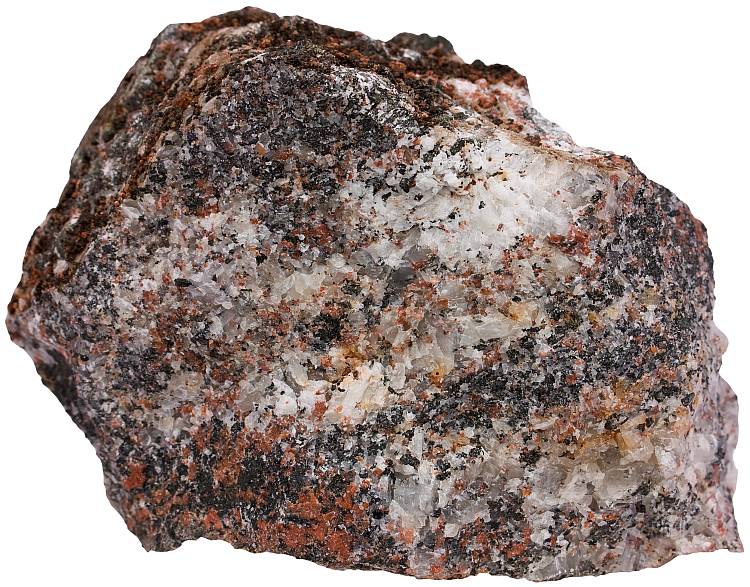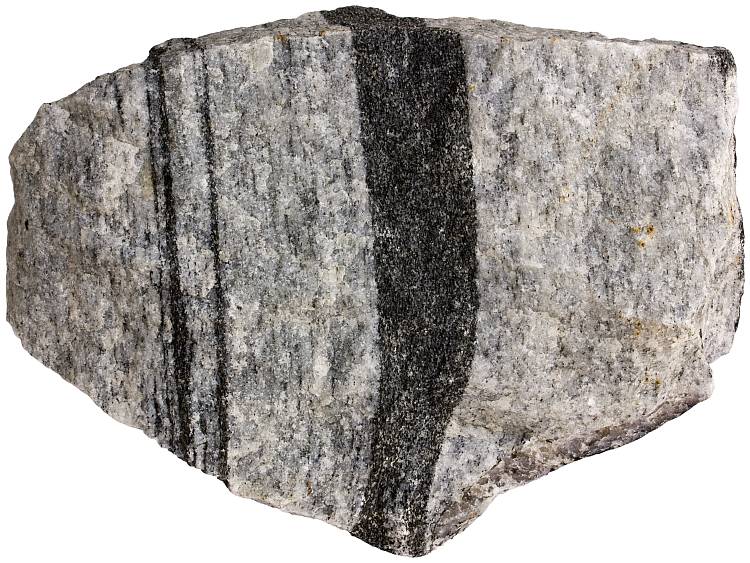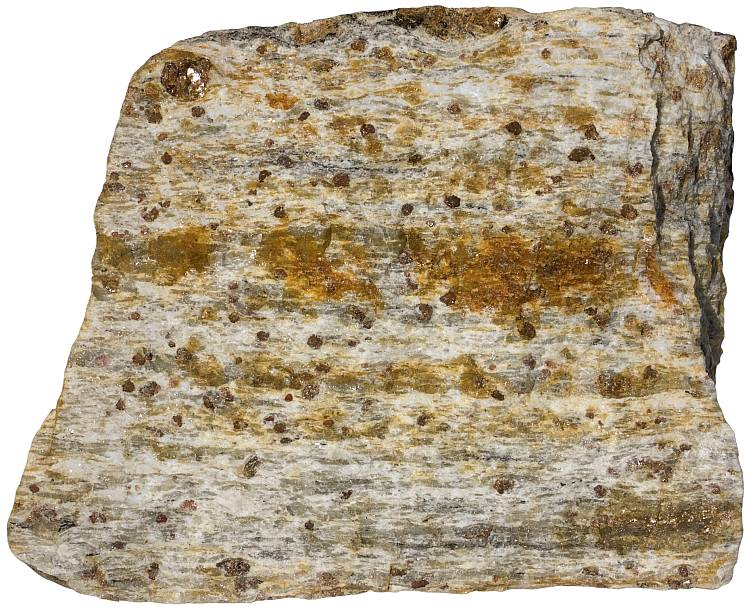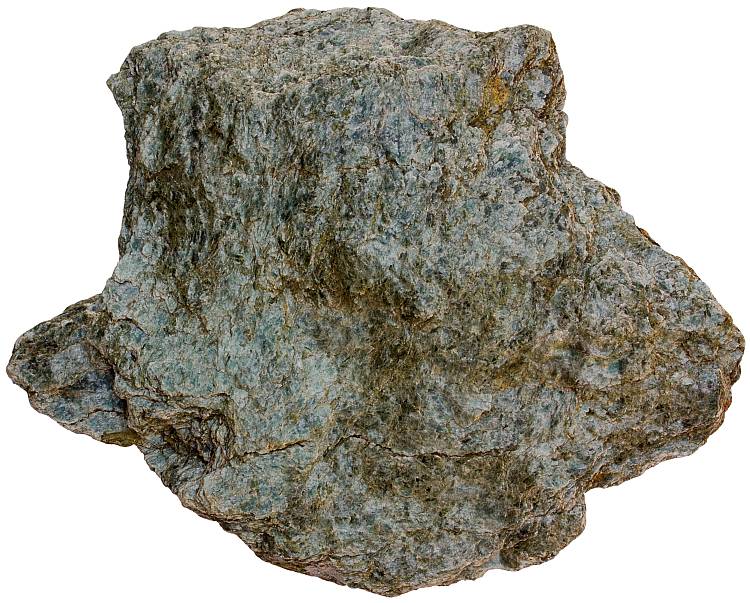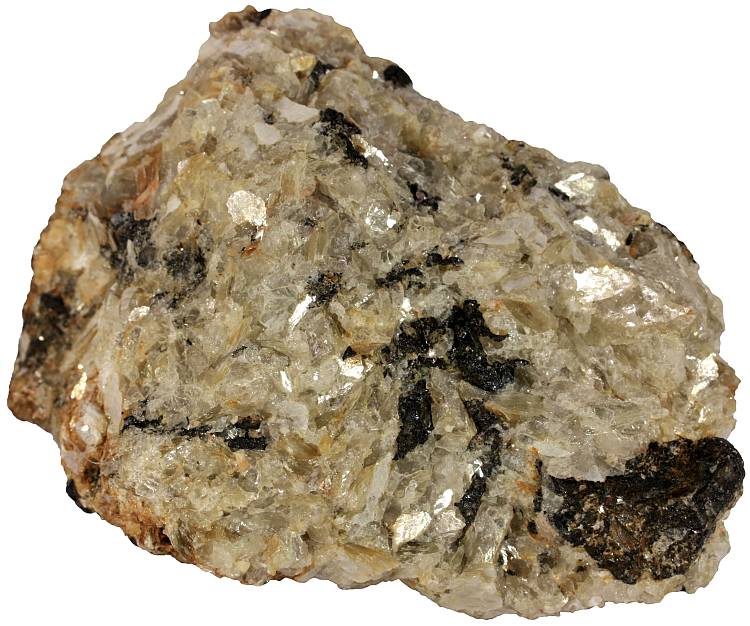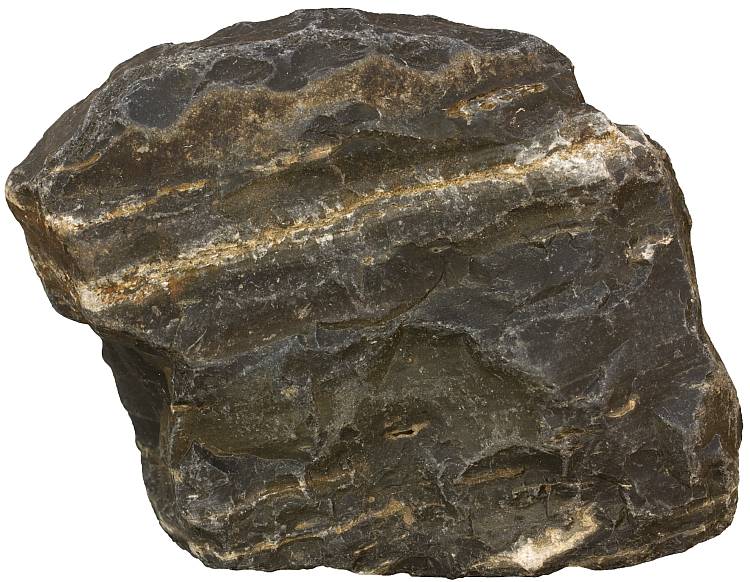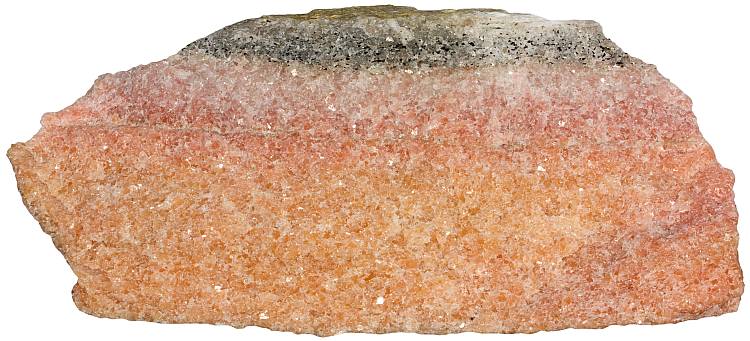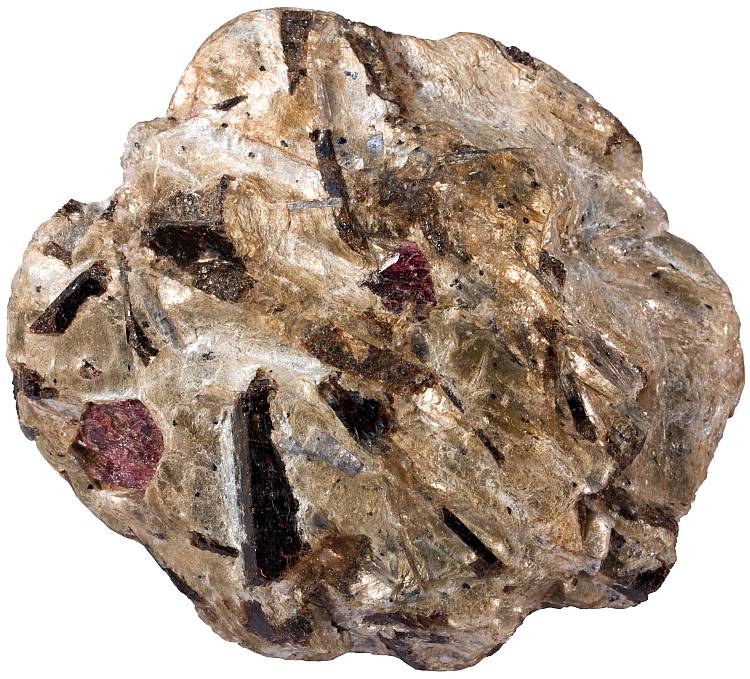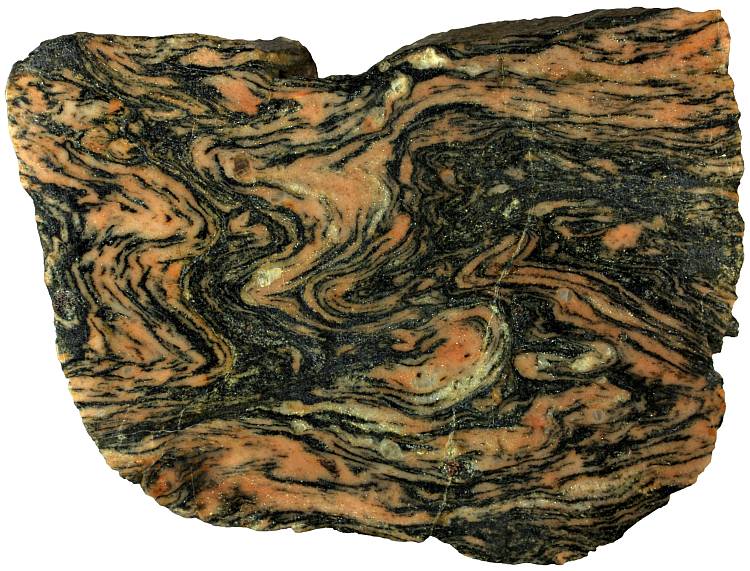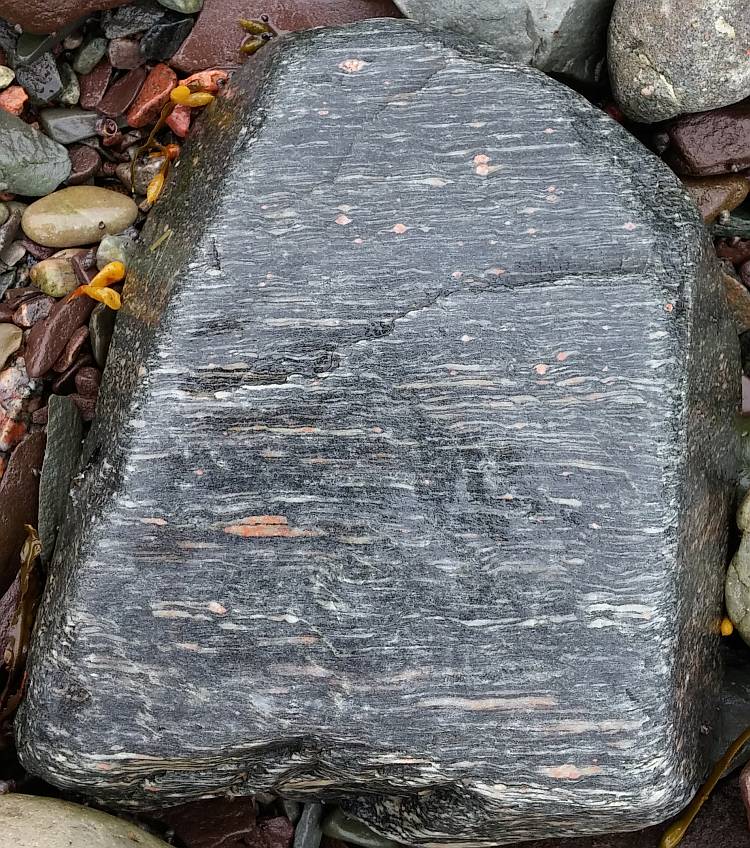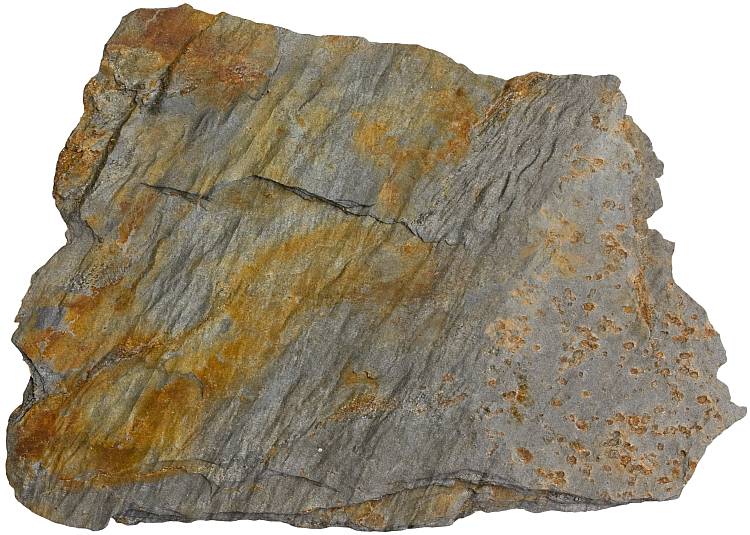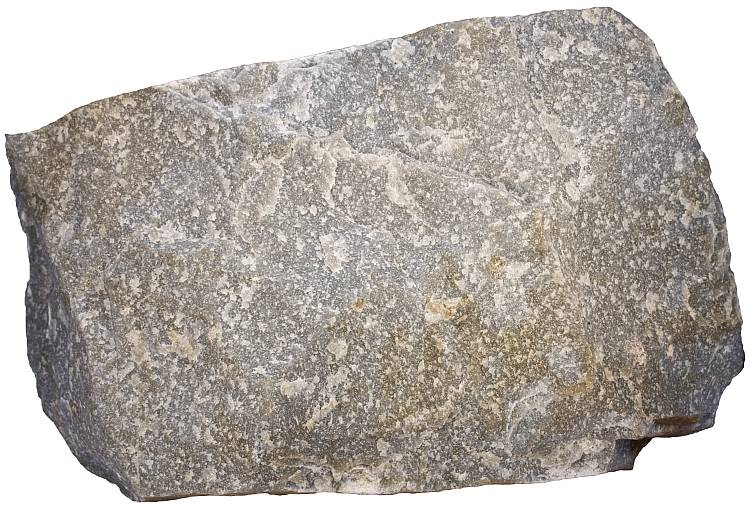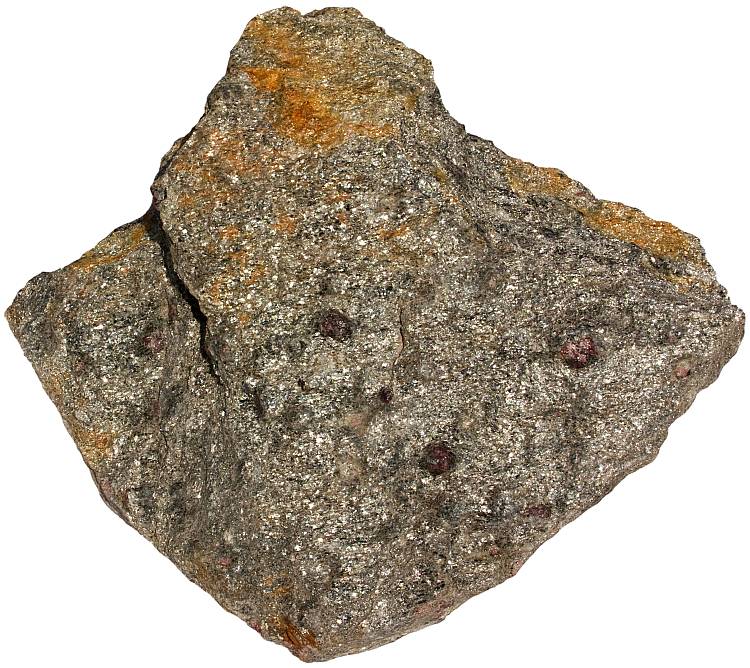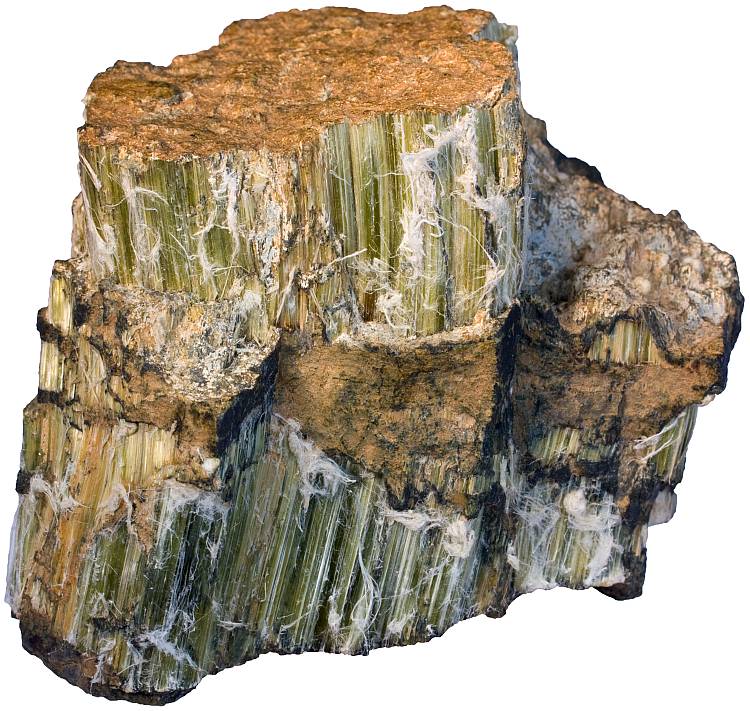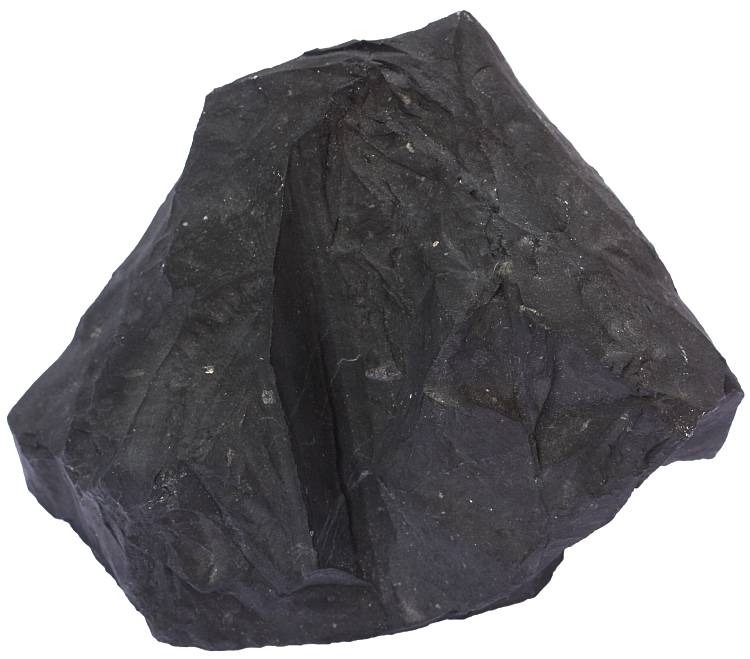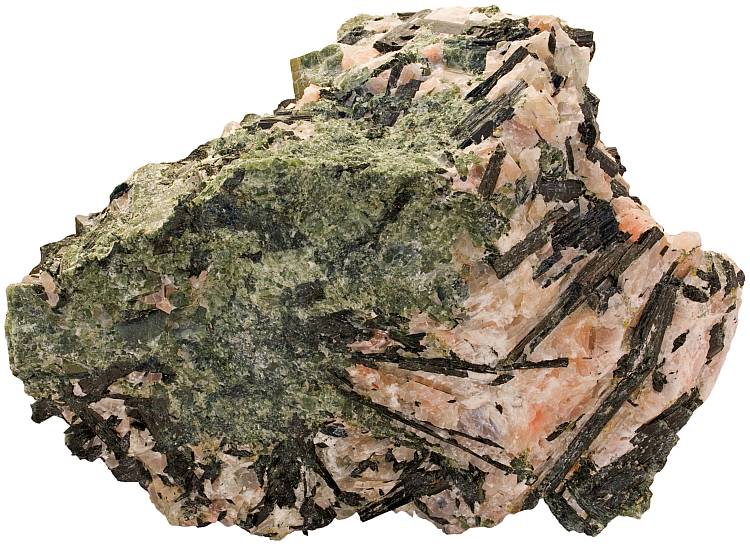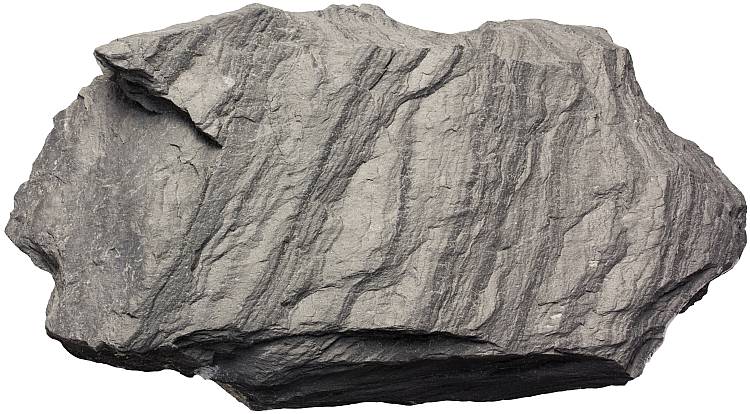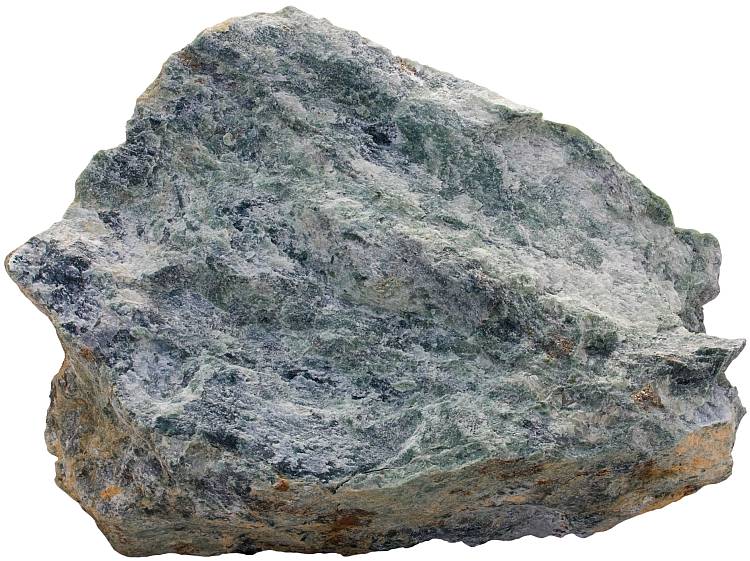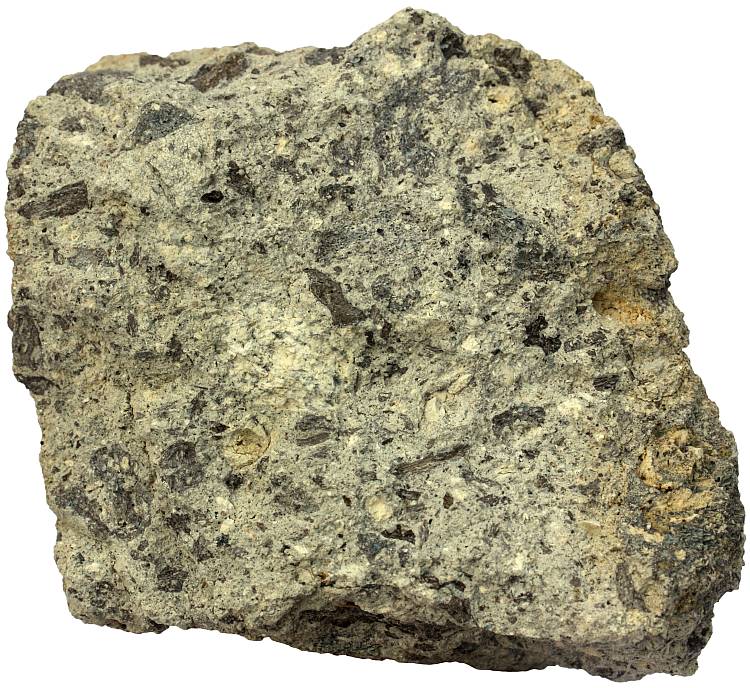Rock type is usually defined as a particular kind of rock having a specific set of characteristics1. Rock types are specific assemblages of minerals (most rocks are composed of minerals). Rocks are much more vaguely defined than minerals. Even rocks within one rock type may have a highly variable composition.
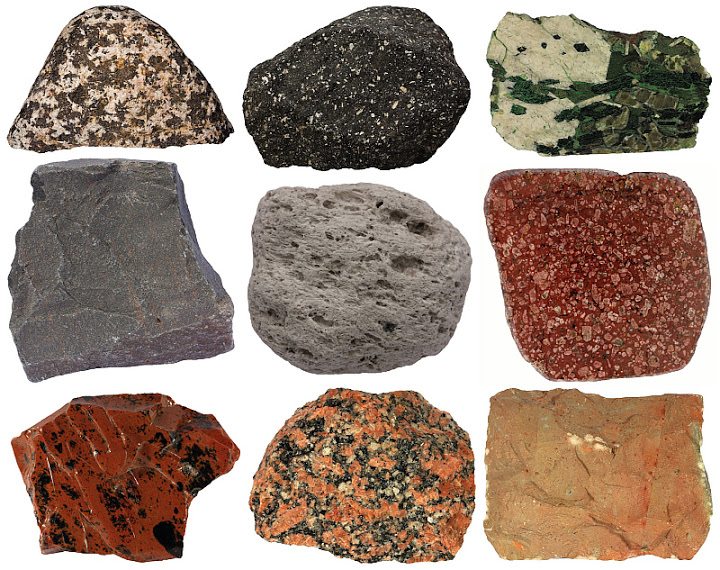
Some important igneous rocks from left to right: gabbro, andesite, pegmatite, basalt, pumice, porphyry, obsidian, granite, and tuff.
Still, there is a fundamentally sound reason to talk about such a vague concept as a rock type because these assemblages occur again and again in many different locations. Rock type is like a biome (desert, savannah, rain forest). One particular desert may greatly differ from another (one is sandy and another rocky), but they both share something that is common (low precipitation). Exactly the same is true with rock types — one granite may be white and another red, but they both have a similar composition (major minerals are feldspar and quartz).
Here is a list of major rock types recognized by geologists. Immense number of rock types have been defined (their definitions often overlapping) and many rock classifications exist. However, there seems to be a fair number of terms and classification principles that have successfully stood the test of time.
Contents
Igneous rocks
Andesite · Anorthosite · Aplite · Basalt · Basanite · Carbonatite · Dacite · Diabase · Diorite · Dunite · Foyaite · Gabbro · Granite · Granodiorite · Harzburgite · Hawaiite · Hornblendite · Ignimbrite · Ijolite · Kimberlite · Komatiite · Limburgite · Monzonite · Nepheline syenite · Norite · Obsidian · Pegmatite · Peridotite · Phonolite · Picrite · Porphyry · Pumice · Pyroxenite · Rapakivi · Rhomb-porphyry · Rhyolite · Scoria · Sövite · Syenite · Tephrite · Tonalite · Trachyandesite · Trachyte · Troctolite · Trondhjemite · Tuff
Sedimentary rocks
Arkose · Banded iron formation · Bauxite · Bog iron · Breccia · Chalk · Chert · Coal · Conglomerate · Coquina · Diamictite · Diatomite · Dolomite · Evaporite · Flint · Graywacke · Gypsum · Laterite · Lignite · Limestone · Oil shale · Oolite · Phosphorite · Sandstone · Shale · Siltstone · Tillite · Travertine · Turbidite · Umber
Metamorphic rocks
Amphibolite · Anthracite · Blueschist · Charnockite · Eclogite · Epidosite · Fenite · Gneiss · Granulite · Greenschist · Greisen · Hornfels · Marble · Metapelite · Migmatite · Mylonite · Phyllite · Quartzite · Schist · Serpentinite · Shungite · Skarn · Slate · Soapstone · Suevite
Igneous rocks
It all starts with igneous rocks. The Earth is believed to have been entirely molten in its early stages of development. Hence, all other rock types are derivatives of igneous rocks.
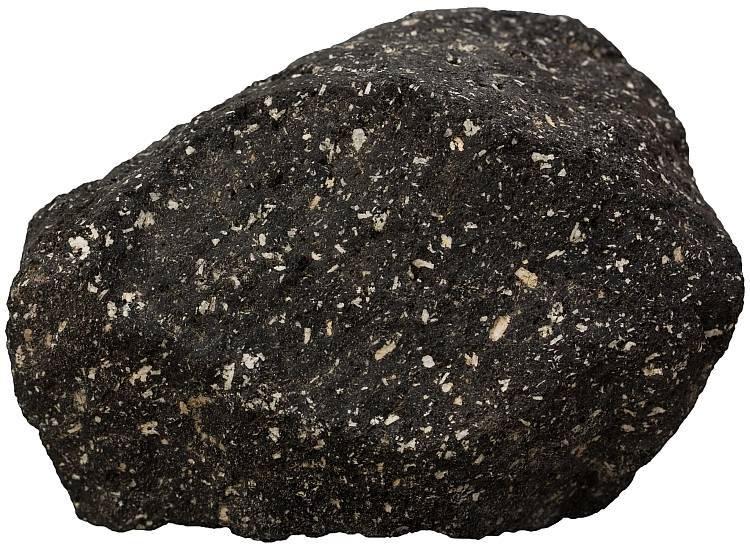
Andesite is a volcanic rock with a so-called average composition. It is more felsic than basalt and more mafic than dacite. The main minerals are plagioclase and hornblende. Andesite is a common rock of subduction zone volcanoes. It is generally dark gray and may contain phenocrysts of plagioclase (usually andesine), biotite, and hornblende. Andesite is an extrusive equivalent of diorite.^
Anorthosite is a plutonic rock which is composed of plagioclase (>90%). Anorthosite is a cumulate rock. Its constituent plagioclase crystals floated to the top of the mafic magma chamber and crystallized there as almost monomineralic plagioclase rock. Some anorthosites display very beautiful display of colors known as labradorescence and are therefore valuable ornamental stones. Anorthosite is a common rock on the Moon. The highlands of the Moon which we see as brighter areas are largely composed of this rock type.^
Aplite is a fine-grained and usually light-colored plutonic rock. Aplite usually solidified in a narrow crack where heat loss to the adjacent rocks was rapid and crystals did not have much time to grow in size. Aplites may have a variable composition from granite to gabbro, but the term “aplite” is mostly used to describe fine-grained granitic rocks.^
Basalt is a very common dark-colored volcanic rock composed of calcic plagioclase (usually labradorite), clinopyroxene (augite) and iron ore (titaniferous magnetite). Basalt may also contain olivine, quartz, hornblende, nepheline, orthopyroxene, etc. Basalt is a volcanic equivalent of gabbro. Oceanic crust is mostly composed of basalt or rocks with the same composition (gabbro, diabase).^
Basanite is a volcanic rock. It is similar to basalt but contains less silica and usually more alkali metals. Basanite may contain olivine, pyroxene, and feldspathoid phenocrysts. Similar rock without olivine is tephrite. Limburgite is a glassy nepheline basanite.^
Carbonatite is an igneous rock that is predominantly composed of carbonate minerals. Both volcanic and plutonic carbonatites are known. Alvikite is a volcanic calcite carbonatite, sövite is a plutonic calcite carbonatite. Carbonatite is generally associated with alkaline igneous rocks. Carbonatite is a host rock of several important commodities, most notably apatite, rare earth elements and niobium.^
Dacite is a felsic volcanic rock intermediate in composition between andesite and rhyolite. Dacite is a common rock of subduction-related volcanoes on the active continental margins (Cascades in the northwestern USA, for example). Dacitic magma in the crust solidifies as intrusive rock granodiorite.^
Diabase is a dark-colored igneous rock. It is compositionally equivalent to gabbro and basalt but texturally between them. Diabase is a common rock type. It occurs mostly in shallow intrusions (dikes and sills) of basaltic composition. Diabase grades to basalt when it solidifies rapidly and to gabbro when more time is given to the crystals to grow.^
Diorite is a plutonic rock with sodium-rich plagioclase and hornblende. Diorite is compositionally equivalent to volcanic rock andesite. It is intermediate in composition between felsic granite and mafic gabbro.^
Dunite is an ultramafic plutonic rock that is composed almost exclusively of olivine (>90%). Dunite is a sub-type of peridotite. These rocks are abundant in the Earth’s mantle but occur relatively rarely in continental rocks. Olivine rock is a synonym of dunite. Olivinite is a variety that contains more magnetite than chromite.^
Foyaite is a rare igneous rock consisting of nepheline and alkali feldspar with a trachytic texture. Foyaite is a variety of nepheline syenite.^
Gabbro is a coarse-grained and usually dark-colored igneous rock. Gabbro is an intrusive rock. Igneous rocks with a similar composition are basalt (extrusive equivalent of gabbro) and diabase (the same rock type could be named dolerite or microgabbro instead).^
Granite is a very common plutonic rock with feldspar and quartz as the main constituents. Granite is an igneous rock, but some high-grade metamorphic rocks are compositionally very close and have been sometimes referred to as granites also.^
Granodiorite is a granitoid (quartz-rich plutonic rock) in which the dominant feldspar is plagioclase. Granodiorite is compositionally between other granitoids granite and tonalite. Granodiorite contains more quartz than diorite. This rock type is frequently misidentified as granite.^
Harzburgite is what remains when basalt is taken out of the mantle. Harzburgite is a sub-type of peridotite. Harzburgite is composed of orthopyroxene and olivine, it is one of the ultramafic rocks and belongs into the peridotite group. These are rocks that are abundant in the mantle but scarce on the surface.^
Hawaiite is a volcanic rock similar to basalt but contains more alkali metals. It is a sodic variety of trachybasalt.^
Hornblendite is an ultramafic plutonic igneous rock that is composed almost entirely of hornblende. Hornblendite crystallized from water fluid-rich magma which favored the formation of hydrous hornblende over anhydrous pyroxene.^
Ignimbrite is a fiery rock. It is a pyroclastic rock formed by very hot ground-hugging cloud of volcanic ash, blocks, and gases known as pyroclastic flow or pyroclastic density current. Ignimbrite is synonymous with flood tuff, welded tuff, ash-flow tuff and pyroclastic flow deposit3.^
Ijolite is a rare igneous rock consisting of nepheline and pyroxene. Ijolite is a variety of foidolite (feldspathoid-rich plutonic rock in which fledspathoids are dominating over feldspars).^
Kimberlite is an ultramafic rock consisting of olivine and one or more of the following: phlogopite, serpentine, diopside, monticellite, calcite. Kimberlite contains no leucite. Kimberlite is an economically important rock type because it is the principal source (host rock) of diamonds. Kimberlite occurs in pipe-like rock body called diatreme, which formed through violent gas-charged volcanic eruption.^
Komatiite is an ultramafic lava. Komatiite is compositionally similar to intrusive rock peridotite. Some volcanic rocks (picrites) may be ultramafic because they are olivine cumulates, but komatiite is a true ultramafic lava that formed as a result of very extensive partial melting. Komatiites do not form anymore. Most likely because the Earth has cooled down and does not allow such a high degree of partial melting to take place. Komatiite lavas commonly demonstrate spinifex texture — long olivine crystals in the upper part of a lava flow.^
Limburgite is a variety of basanite with a glassy groundmass and nepheline as the main feldspathoid mineral. Limburgite contains no feldspars.^
Monzonite is a plutonic rock intermediate in composition between syenite and diorite. Monzonite contains approximately equal amount of K-feldspar and plagioclase. Monzonite contains no or small amount of quartz and the content of alkali feldspar and plagioclase are roughly equal.^
Nepheline syenite is a plutonic rock rich in alkali metals and relatively poor in silica. As a result of that it contains alkali minerals like feldspathoid nepheline in addition to alkali feldspar, alkali amphibole and/or alkali pyroxene. Quartz is absent. Phonolite is a volcanic analogue of nepheline syenite.^
Norite is a gabbroid rock in which the pyroxene mineral is orthopyroxene.^
Obsidian is a volcanic glass — a rock type that in pure form contains no crystals. Obsidian is usually rhyolitic in composition and black or reddish in color. Obsidian is frequently associated with pumice.^
Pegmatite is an exceptionally coarse-grained plutonic rock. Most pegmatites have a granitic composition. Simple pegmatites contain common minerals like feldspar, mica and quartz. Complex pegmatites are rich in unusual chemical elements and minerals which makes pegmatite a potential mineral resource.^
Peridotite is the principal rock type in the Mantle. Unaltered peridotite is usually dark green in color but most peridotites we see in the surface are altered to a metamorphic rock type serpentinite. There are several sub-types of peridotite: harzburgite, dunite, lherzolite, etc.^
Phonolite is an alkaline volcanic rock that is composed of fine-grained alkali feldspar, nepheline, alkali amphiboles and alkali pyroxenes. Phonolite may be porphyritic. It is an extrusive equivalent of plutonic rock nepheline syenite.^
Picrite is a mafic igneous rock similar to basalt but with more olivine. Picrite may form as an olivine cumulate rock. Olivine crystals may settle to the lower part of a lava flow, forming an ultramafic rock.^
Porphyry is an igneous rock characterized by porphyritic texture. Porphyritic texture is a very common texture in igneous rocks in which larger crystals (phenocrysts) are embedded in a fine-grained groundmass. Porphyritic texture indicates that the crystallization process started well before the lava was extruded to the surface.^
Pumice is a lava froth — an extremely vesicular and light-weight volcanic rock with a variable composition. Pumice is unusually light-weight for a rock — it floats in water. Pumice is usually light-colored and has a felsic composition. Pumice forms during explosive volcanic eruptions.^
Pyroxenite is a plutonic rock that is composed almost exclusively (over 90%) of pyroxene minerals. Pyroxenite is a cumulate rock usually associated with other ultramafic (peridotite) and mafic (gabbro) rocks.^
Rapakivi is a variety of granite with K-feldspar phenocrysts that are mantled with plagioclase. Rapakivi is an anorogenic rock occurring in intra-plate settings.^
Rhomb-porphyry is a rare porphyritic rock with abundant wedge-shaped anorthoclase phenocrysts. Rhomb-porphyry from Norway is a volcanic equivalent of larvikite. Rhomb-porphyry is compositionally trachyandesite (latite).^
Rhyolite is a felsic volcanic rock. It is an extrusive analogue of granite. Rhyolite is associated with explosive volcanoes. Rhyolitic rock, because of high viscosity, may occur as pumice and obsidian. Porphyritic rocks are also frequently rhyolitic in composition.^
Scoria is a highly vesicular mafic dark-colored volcanic rock. It is similar to pumice but darker in color, not as light-weight, and more mafic in composition. Vesicules in scoria are usually larger than in pumice.^
Sövite is a type of plutonic carbonatite where the dominant carbonate mineral is calcite. Sövite is the most common variety of carbonatite. It is often mined as a host rock of various mineral resources.^
Syenite is a plutonic rock that contains little or no quartz and in which K-feldspar dominates over plagioclase. Syenite is like a granite but without quartz. In nepheline syenite some of the alkali feldspar is replaced by nepheline and quartz is completely absent.^
Tephrite is a volcanic rock resembling basalt, but it is rich in feldspathoid minerals. This makes it very similar to basanite, but tephrite contains very little olivine.^
Tonalite is a granitoid in which almost all the feldspar (>90%) is plagioclase. Trondhjemite and plagiogranite are varieties of tonalite.^
Trachyandesite is a volcanic rock intermediate in composition between trachyte and andesite. Trachyandesite is compositionally close to intrusive rock monzonite. Rhomb-porphyry is a variety of trachyandesite.^
Trachyte is a feldspar-rich rock. It is a volcanic equivalent of syenite. Trachyte grades into rhyolite with increasing quartz content.^
Troctolite is a variety of gabbro without pyroxene. Troctolite is a cumulate rock associated with other gabbroic rocks like gabbro, norite, and anorthosite.^
Trondhjemite is a leucocratic variety of tonalite composed of sodic plagioclase, quartz and biotite.^
Tuff is a volcanic analogue of sandstone. It is a consolidated and lithified volcanic ash.^
Sedimentary rocks
Sedimentary rocks are products of the consolidation of loose sediments which are in most part bits and pieces of other disintegrated rocks. There are three main types of sedimentary rocks: mudstone, sandstone, limestone.
Sure, this is very simplistic approach, but volumetrically almost all sedimentary rocks fall under these categories if we give them relatively broad definition e.g. sandstone also includes siltstones and conglomerates, and limestone includes all sedimentary carbonate rocks. There are notable exception that do not fit into this classification scheme like evaporites, coal, and chert, but volumetrically they are clearly less important. In the list below, of course, these exceptions are not neglected.
Arkose is a feldspar-rich (25%) sandstone. Arkose is usually coarse-grained and composed of angular grains. These properties are characteristic of relatively immature sediments. Arkose is usually a disintegration product of nearby granitic rocks.^
Banded iron formation is a chemogenic metasedimentary rock consisting of alternating silica- and iron-rich bands. Banded iron formation (BIF) is the principal source of iron. It is perhaps the most important rock type as our society is heavily reliant on iron extracted from it.^
Bauxite is an aluminum-rich sedimentary rock. It is a principal ore of aluminum. Aluminum in bauxite is hosted by aluminum hydroxide minerals, mostly gibbsite. The major impurities are iron oxides and hydroxides (which give reddish color to most bauxites) and clay minerals. Bauxite is a weathering product of aluminum-bearing rocks.^
Bog iron is a type of iron ore composed of limonite with impurities like clay or plant debris. Bog iron is porous rock formed in bogs, wetlands, and shallow lakes. Iron is precipitated from water by the oxidizing action of bacteria and algae. Bog iron is common in cold temperate zones of Scandinavia and North America.^
Breccia is a coarse-grained shattered rock that is composed of highly angular fragments held together by a mineral cement. Breccia may be a result of several different geological processes: talus formation, explosive volcanic eruptions, tectonic movements, rock avalanches, etc.^
Chalk is a soft, friable and porous variety of limestone. Chalk is composed of calcareous tests of marine microorganisms like coccoliths and foraminifers. The best known chalks are of Cretaceous age. Chalk is often associated with chert (flint).^
Chert is a hard and compact sedimentary rock, consisting dominantly of very small quartz crystals. Chert occurs mostly in carbonate sedimentary rocks as nodules or layers. Flint is a dark-colored variety of chert.^
Coal is a combustible rock containing more than 50% by weight of carbonaceous material. Coal in most cases is a lithified peat. Coal is a major fossil fuel, although in recent years its importance in the developed world has been declining.^
Conglomerate is a lithified gravel (rounded rock fragments or mineral grains larger than 2 mm in size). Conglomerate contains smaller grains (matrix) in the interstices. Conglomerate is a former river bed, cobble beach or another environment where the constituent clasts were rounded. Breccia is somewhat similar rock with angular clasts.^
Coquina is a detrital limestone consisting of shells or shell fragments. Coquina is a coarse-grained (particles over 2 mm in size) conglomeratic rock. Finer carbonate rock made of fossil fragments is calcarenite.^
Diamictite is a poorly sorted or non-sorted terrigenous non-calcareous sedimentary rock. Diamictite is composed of widely variable clast sizes from clay to boulders. Diamictite is a nongenetic term (purely descriptive, no formation mechanism is implied). Most diamictites are glacial in origin (tillite), but some are volcanic (lithified lahars), submarine (turbidites), mass wasting breccias, etc.^
Diatomite (diatomaceous earth) is a light-colored sedimentary rock composed chiefly of siliceous shells (frustules) of diatoms. Diatomite is soft and friable rock. Most diatomite deposits are marine but some were formed in lakes. Diatomite has several industrial uses.^
Dolomite (dolostone) is a carbonate rock containing more than 50% by weight of the mineral dolomite. Dolomite may be a reservoir rock for hydrocarbons (oil & gas).^
Evaporite is any rock type formed as a result of consolidation of salts crystallized from hypersaline water. Evaporites may form in lagoons where evaporation is intensive due to hot climate and the influx of new lower salinity water is (periodically) restricted, but in many cases evaporites formed by replacing the original minerals of sedimentary rocks with the new ones from brines percolating the rocks. Rock salt and gypsum (as a rock type) are examples of evaporites.^
Flint is basically a synonym of chert. The term is especially often used for a homogenous dark gray or black variety of chert. Flint is more widely used name for the rock in general public, but the term “chert” is usually preferred in geological literature (regardless of the color of the rock).^
Graywacke is an old and vaguely defined rock name for a coarse-grained firmly indurated sandstone that is dark-colored and contains lots of clay and lithic fragments. Graywacke is poorly sorted marine rock. It is nowadays interpreted to be of turbiditic origin. This rock name has been extensively criticized since 1839 when Roderick Murchison said that “it has already been amply shown that this word should cease to be used in geological nomenclature, and…is mineralogically worthless”. Almost two centuries later many geologists seem to share the view of Murchison. But regardless of that, the rock name continues to be used at least informally and as a field term for a dark-grained “dirty” sandstone about which “you can’t tell much about in the field”.^
Gypsum as a rock type is an aggregate of gypsum crystals. Gypsum is an evaporite and is usually associated with other evaporite minerals like halite and anhydrite. Gypsum occurs in different forms: massive alabaster, fibrous satin spar, selenite crystals. Gypsum is an important industrial mineral. It is used mostly in the construction industry.^
Laterite is a reddish weathering product of basaltic (mostly) rocks. Laterite forms in hot to temperate climate and is a residual product of weathering.^
Lignite is a variety of low-quality coal that is intermediate in coalification between coal and sub-bituminous coal. Brown coal is a synonym of lignite.^
Limestone is a sedimentary rock that is chiefly composed of calcium carbonate. Limestone is a major rock type. It is mostly marine and biogenic, but can also form as a chemical precipitate (travertine, tufa). Oolite, chalk, calcarenite, coquina, etc. are varieties of limestone.^
Oil shale is a rock that yields oil (shale oil) upon heating without oxygen. Organic (burning) matter in oli shale is kerogen. Oil shale is a variety or shale. Oil shale reserves are abundant, but it is seldom used as a fossil fuel because it is usually low in calorific value and contains lots of impurities.^
Oolite is a rock made up of small, generally rounded grains with internal growth bands that are named ooids. Most oolites are limestones (ooids are composed of calcium carbonate).^
Phosphorite is a sedimentary rock containing significant amount of phosphate material. Phosphorite is a rock containing enough phosphate to be of economic interest. Phosphatic matter may be in ooids, pellets, nodules, shells, bones, etc.^
Sandstone is a lithified sand. There are many subtypes of sandstone: arkose, orthoquartzite, grit, flagstone, graywacke, and many others. Sandstone is among the most widespread sedimentary rocks. The most abundant constituent mineral in most sandstones is quartz.^
Shale is a laminated rock consisting of mostly clay minerals. Shale is a lithified mud. Shale and similar mudstones together make up more than half of all the sedimentary rocks. Shale is a source rock of crude oil and natural gas.^
Siltstone is an intermediate member between sandstone and shale in both grain size and properties. Loess is a variety of wind-deposited siltstone. Pure siltstone is composed of very fine dusty grains, but it may contain significant amount of sand and clay.^
Tillite is a poorly sorted glacial sedimentary rock — consolidated glacial till. Tillite in many cases is referred to as diamictite, although the latter is purely descriptive term and may have several formation mechanisms.^
Travertine is a chemically precipitated limestone. Stalactites and other speleothems in karst caves are made of this rock type. Travertine is also filling calcitic veins. Tufa is a soft and porous chemically precipitated calcitic rock.^
Turbidite is not a rock type in a strict sense. It is a sedimentary complex consisting of alternating layers of muddy and silty sediments. Turbidite is inferred to have been deposited underwater by a turbidity current. Flysch is a frequently encountered term in older geological literature that means the same thing.^
Umber is a marine sediment associated with black smokers. Umber is brown in color (brown earth, darker than ocher) and valued as a natural brown pigment. Umber occurs in Cyprus-type massive sulfide deposits.^
Metamorphic rocks
Metamorphic rocks are derived from other pre-existing rocks by mineralogical and/or structural changes. Metamorphism takes place in the solid state and at elevated pressure and temperature generally at depth in the crust1.
Amphibolite is a metamorphic rock composed of amphiboles (usually hornblende) and plagioclase. Amphibolite should not be confused with the metamorphic facies of the same name. Amphibolite is a widespread rock type.^
Anthracite is a type of coal with a highest rank. Coal rank measures the carbon content which is in correlation with calorific value and metamorphic grade. Anthracite has a very high carbon (over 90%) and low volatile content (below 5%).^
Blueschist is a bluish metamorphic rock containing amphibole glaucophane. Blueschist forms at high pressure and low temperature (subducting slab of lithosphere). Its protoliths are basaltic rocks.^
Charnockite is an orthopyroxene-bearing anhydrous metamorphic rock. Charnockite is often referred to as granite. This practice is in most cases misleading because charnockitic rocks did not crystallize from magma.^
Eclogite is a beautiful rock consisting of bright green pyroxene omphacite and red garnet. Eclogite forms at high-pressure conditions. Its protolith is a basaltic rock.^
Epidosite is a hydrothermally altered basaltic rock consisting of epidote and quartz. Epidosite is a product of hydrothermal metamorphism (alteration). Its parent rock was a mafic igneous rock (basalt, diabase).^
Fenite is a metasomatic rock surrounding complexes of carbonatite-alkaline rocks. Fenite is an altered former granitic (or similar) rock. Fenitization is a process which replaces some or all of the original minerals by new and generally more alkaline phases (alkali pyroxene, alkali amphibole, feldspathoids, etc.).^
Gneiss is a banded coarse-grained metamorphic rock that formed deep in the crust beneath forming mountain ranges. The chemical composition may be highly variable, although most gneissose rocks are granitic.^
Granulite is a confusing term in metamorphic petrology. Usually it is a metamorphic rock of granulite facies. This is unfortunate use because metamorphic rocks should never be confused with facies names. There is a similar case with amphibolite and amphibolite facies, but amphibolite is a well-defined rock type. We know that amphibolite does not necessarily equilibrate at amphibolite facies conditions and neither are all amphibolite facies rocks amphibolites. The situation, unfortunately, is more complicated with granulites because there are no compositional defining driteria. Therefore, rocks with widely varying compositions are named so which complicates the matter to the point of utter confusion. It has been proposed that the term should be abandoned and granofels used instead which is free of unwanted associations with metamorphic facies. Nevertheless, the term “granulite” continues to be used in the scientific literature.^
Greenschist is a schistose metamorphic rock. Green color is given to this rock usually by chlorite, epidote, actinolite, etc. Greenschist is usually metamorphosed mafic igneous rock (metabasite). If the green mineral is chlorite, the rock should be named chlorite schist.^
Greisen is a pneumatolytically altered granitic rock. Greisen contains lots of quartz and mica plus several exotic minerals like cassiterite, tourmaline, topaz, etc. Greised is a metamorphic rock that metamorphosed itself — hot fluids that altered the rock were provided by the cooling magma body itself.^
Hornfels is a fine-grained compact rock rock formed by contact metamorphism (low pressure, high temperature).^
Marble is a metamorphosed (recrystallized) carbonate rock (limestone, dolomite rock). Marble is mostly composed of calcium carbonate. Marble in geology has somewhat more restrictive meaning than in commerce.^
Metapelite is a metamorphosed claystone (mudstone, shale). Usually either schist or slate is named so although any metamorphosed rock can be metapelite if it has a clayey protolith. These rocks are rich in aluminum and contain various Al-rich silicate phases like micas, garnet, staurolite, kyanite, cordierite, etc.^
Migmatite is an inhomogenous rock consisting of dark-colored metamorphic rock and light-colored igneous leucosomes. Igneous or igneous-looking component of the rock is either the result or partial melting or material intruded into the rock.^
Mylonite is a highly deformed rock that is composed of stretched and flattened mineral grains. Mylonites form deep in the crust where temperature is high enough for ductile deformations in shear zones.^
Phyllite is a metamorphic rock (usually metapelite) intermediate in grade between slate and schist. Minute platy crystals of sericite, chlorite, or graphite give a characteristic sheen to the cleavage surfaces which distinguishes it from duller slate. Constituent minerals in schist are coarser.^
Quartzite is a metamorphic rock consisting largely or entirely of quartz2. In vast majority of cases, quartzite is a metamorphosed sandstone.^
Schist is a strongly foliated rock rich in platy or elongated minerals. Schist forms during regional metamorphism. Composition may be highly variable.^
Serpentinite is a metamorphosed ultramafic rock. It is composed of serpentine minerals. Serpentinite forms at the expense of olivine- and pyroxene-bearing rocks (peridotite, pyroxenite, dunite). Chlorite, talc and magnesite frequently occur in these rocks.^
Shungite is a metamorphosed oil shale consisting of structureless carbon. Shungite is a very rare rock type and the details of its genesis are unclear.^
Skarn is a metasomatic rock composed of calc-silicate minerals. Skarn is formed at the contact zone between carbonate rocks and silicic magma. Skarn is often rich in hydrothermal ore minerals.^
Slate is a fine-grained rock that can be split into slabs (slaty cleavage). Slate in the majority of cases is a compacted and metamorphosed mudstone or shale. Slate is a low- to medium-grade metamorphic rock that will pass on to phyllite, schist and gneiss with increasing burial depth.^
Soapstone is a soft rock composed of talc with other silicates like micas, pyroxene, amphibole, chlorite, etc. Soapstone is named so because of slippery feel when touched. Soapstone may be schistose (talc schist) or massive.^
Suevite is a shock-metamorphosed rock. Suevite is an impact breccia composed of impact melt and lithic fragments. Impact metamorphism is caused by a collision between Earth and large extraterrestrial body which is usually meteorite or asteroid.^
References
1. Jackson, J. A. (1997). Glossary of Geology, 4th Edition. American Geological Institute.
2. Barth, T. F. W. (2007). Quartzite. In: McGraw Hill Encyclopedia of Science & Technology, 10th Edition. McGraw-Hill. Volume 14. 722.
3. Tilling, Robert I. (2007). Ignimbrite. In: McGraw Hill Encyclopedia of Science & Technology, 10th Edition. McGraw-Hill. Volume 9. 20-21.
